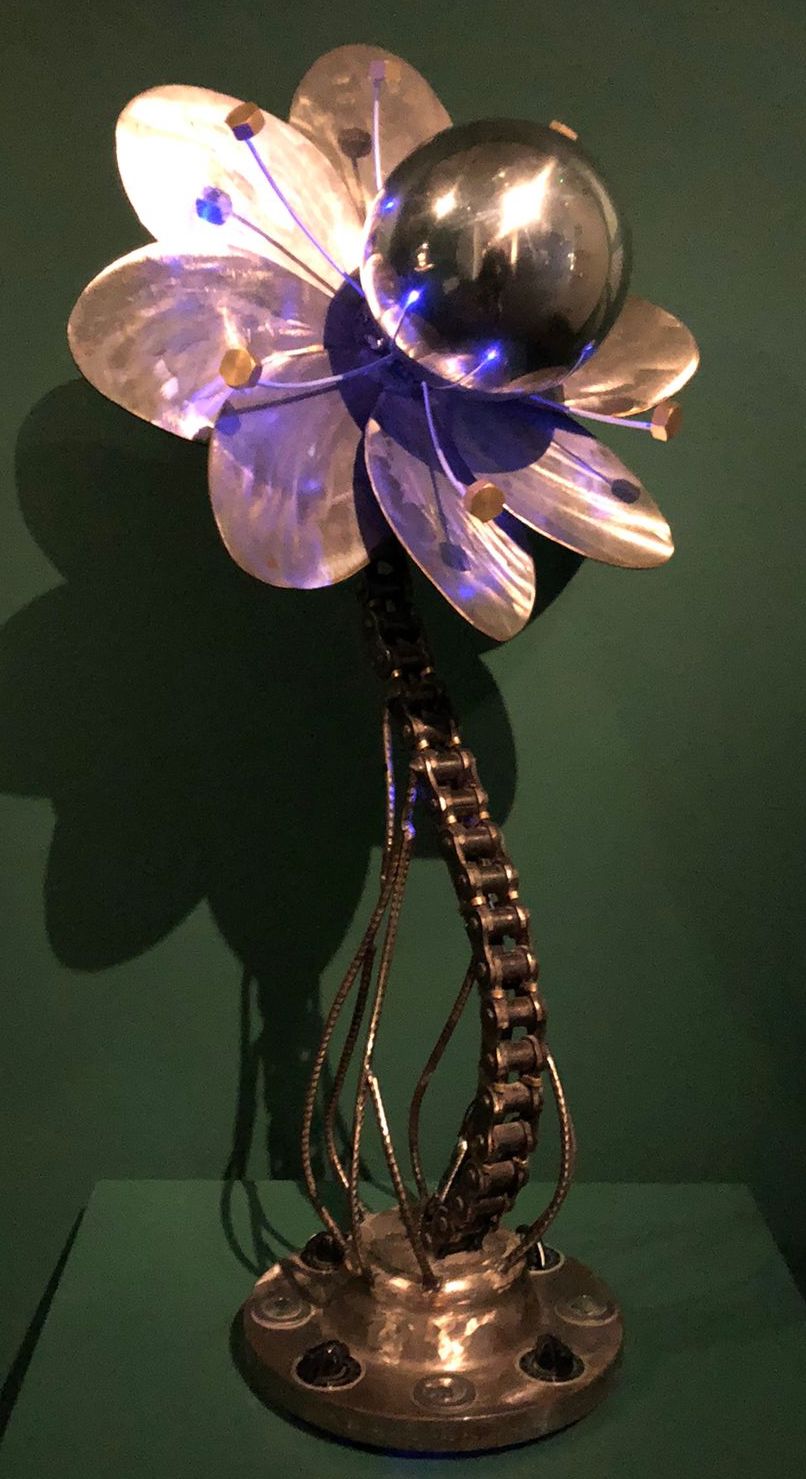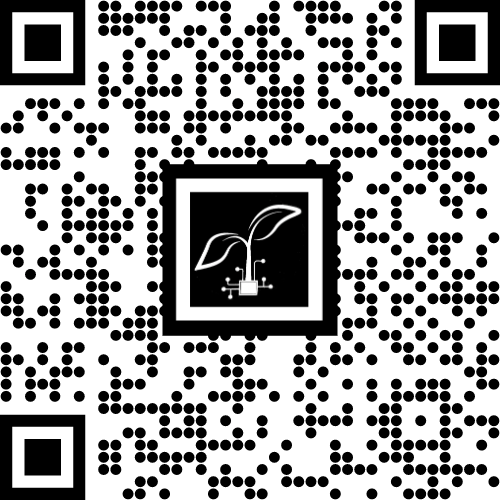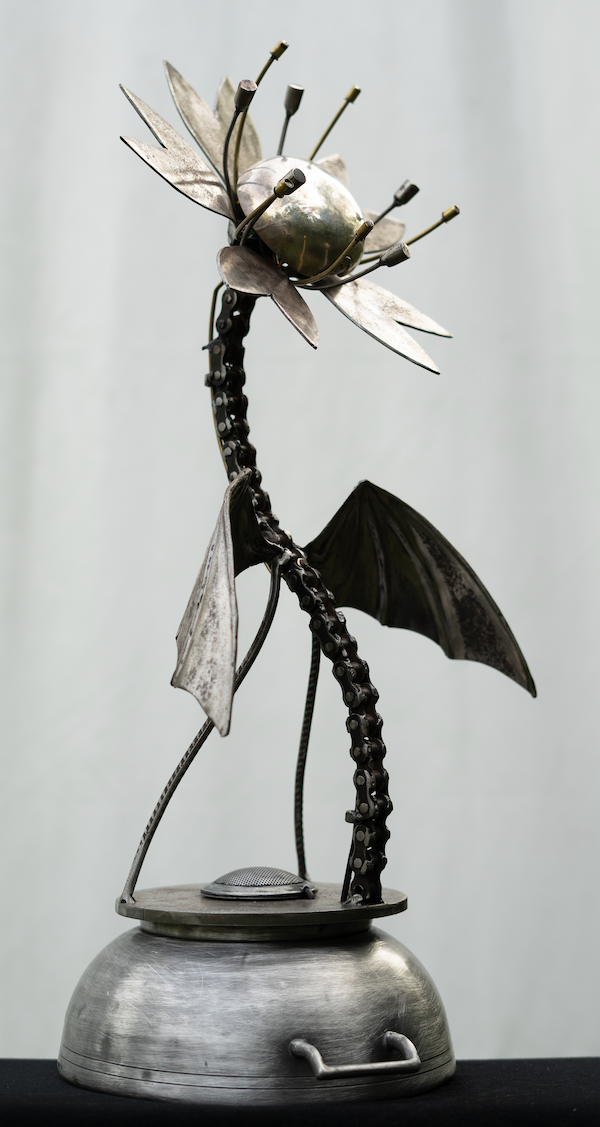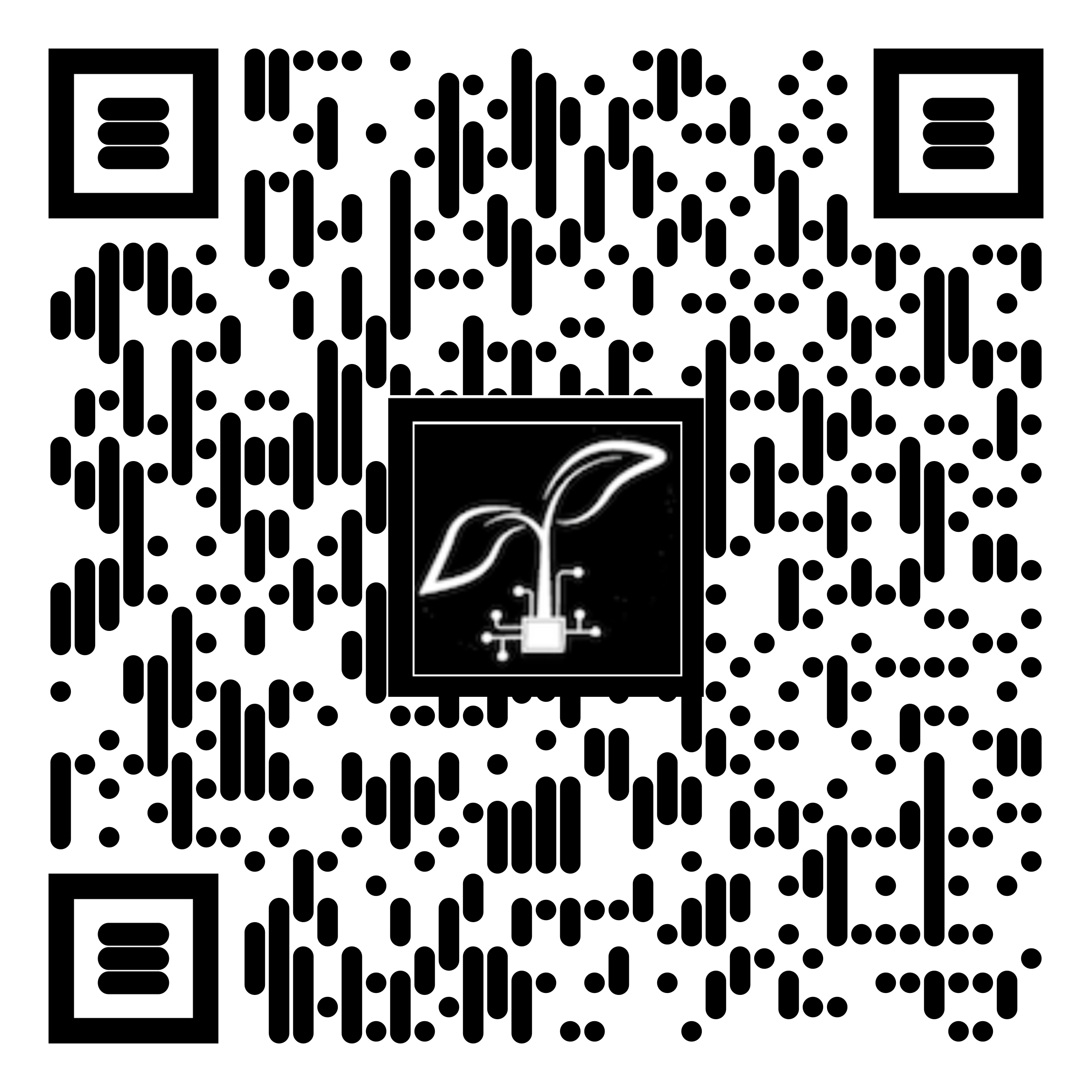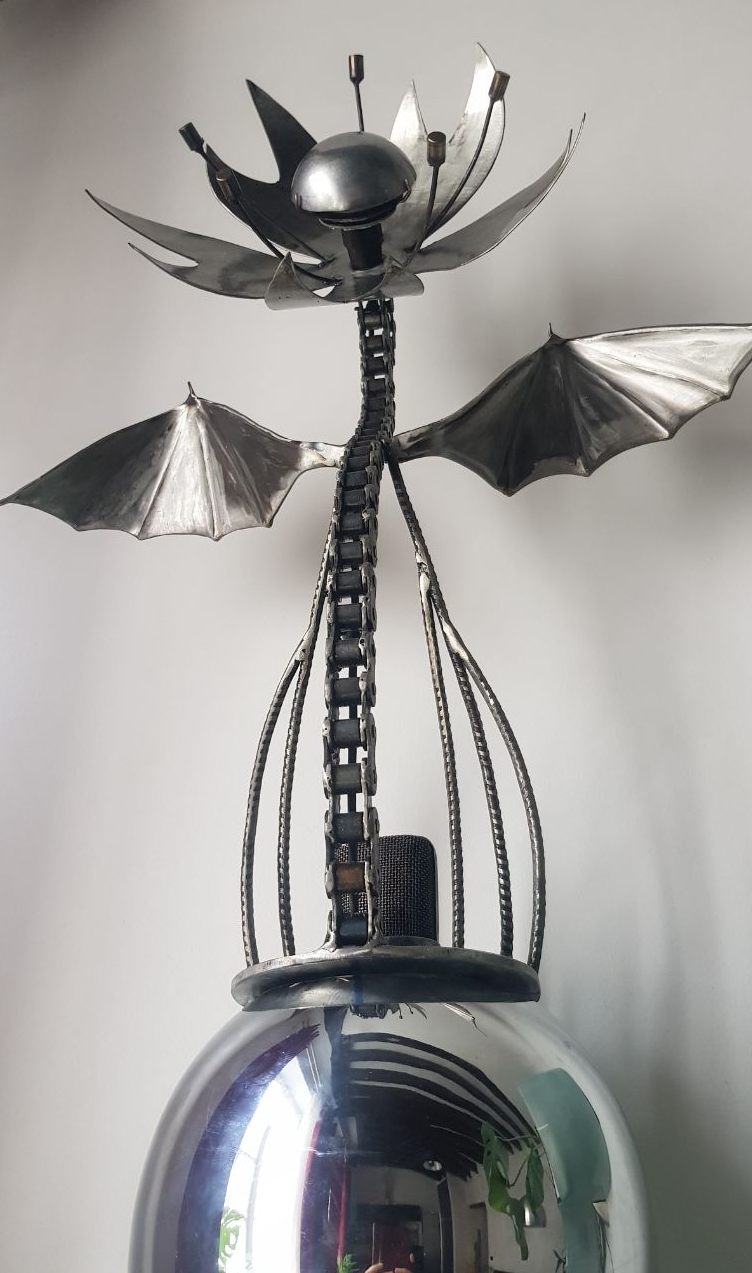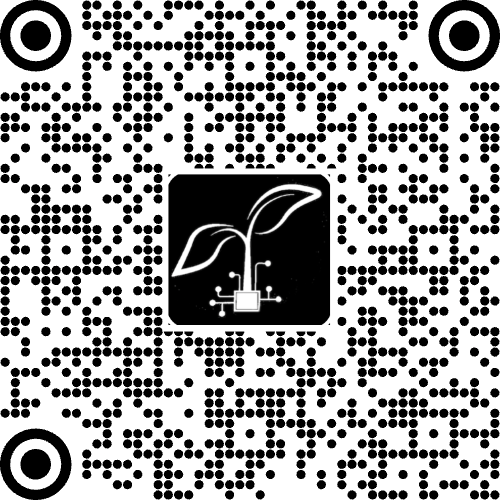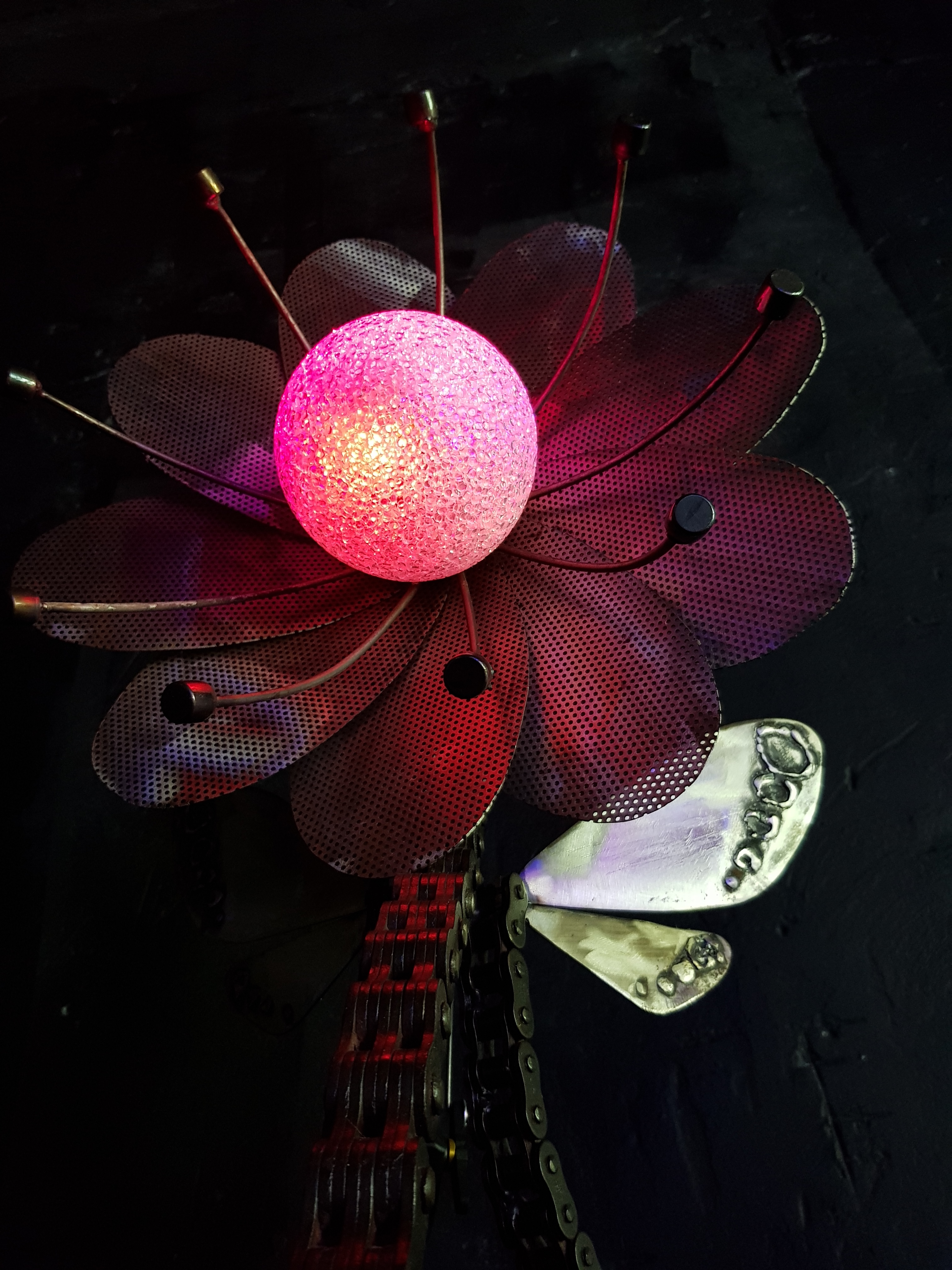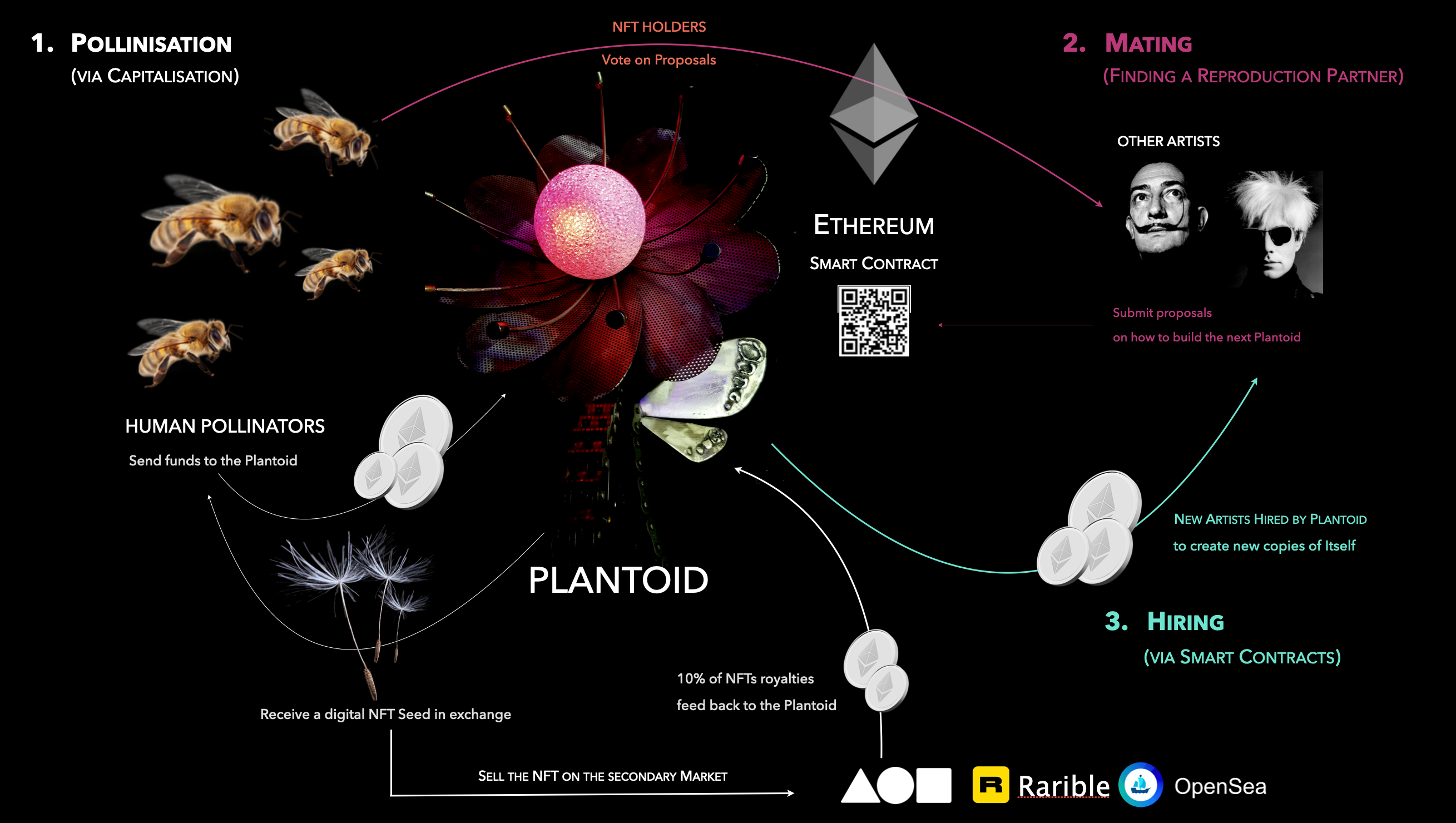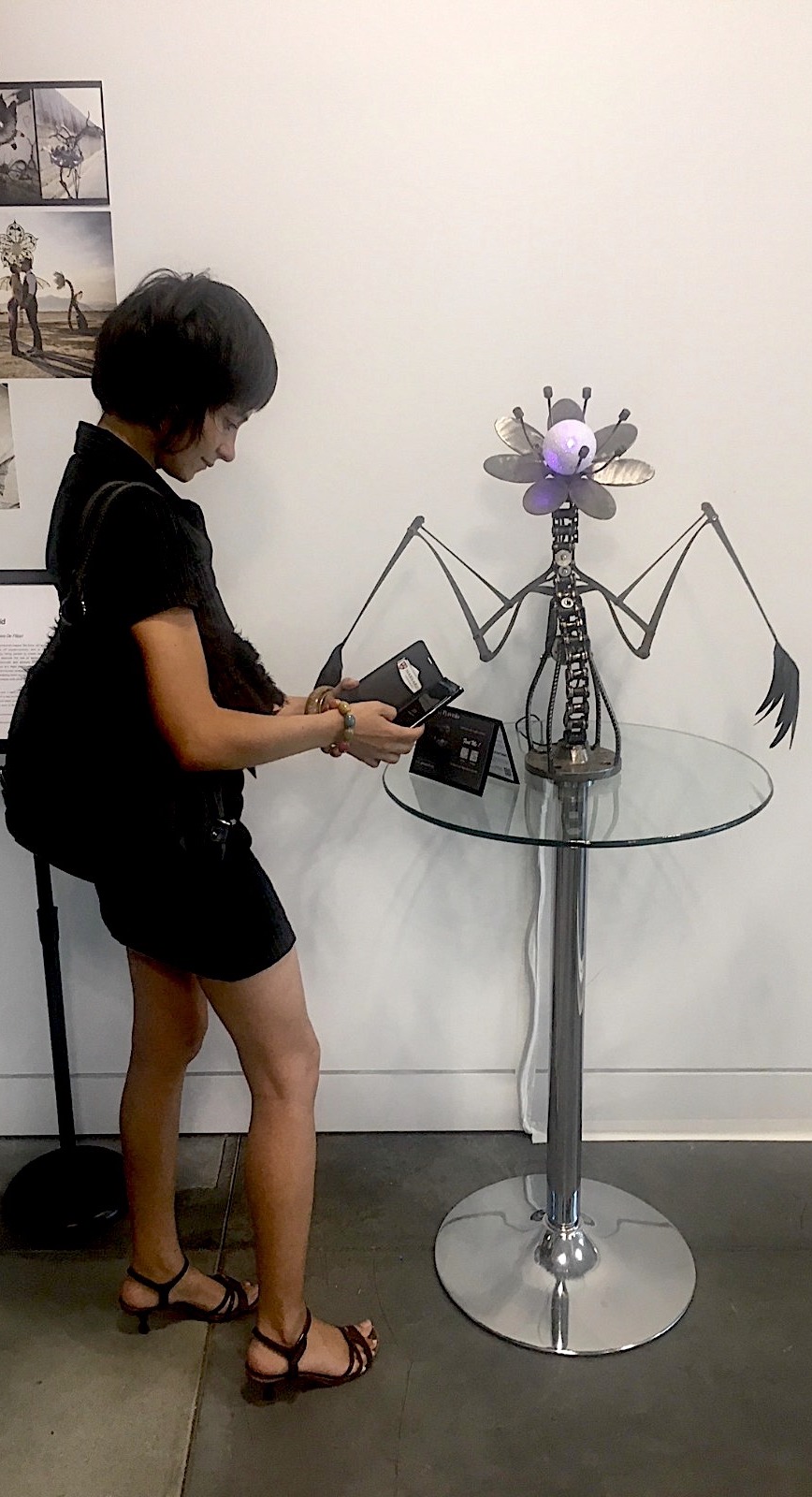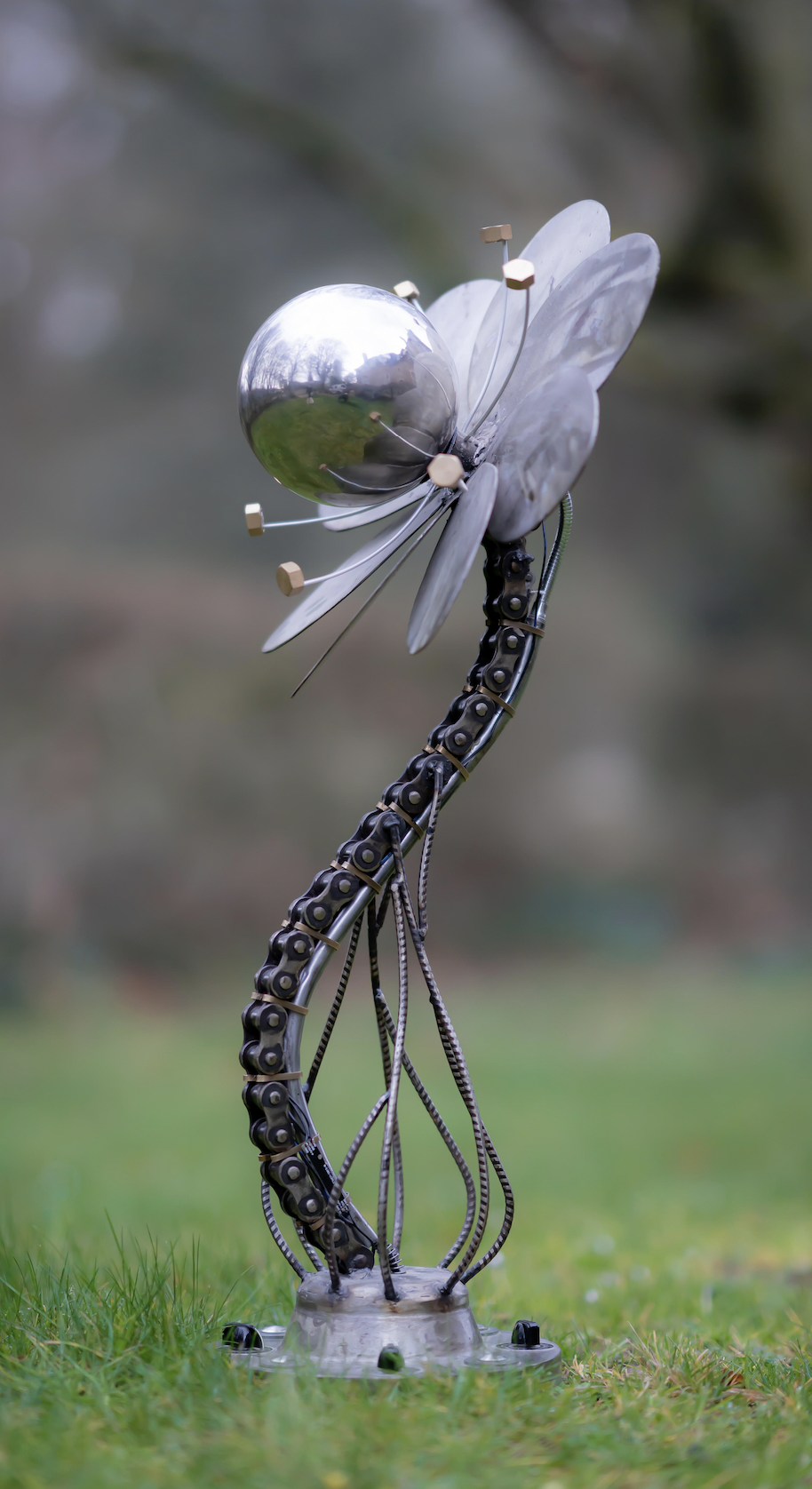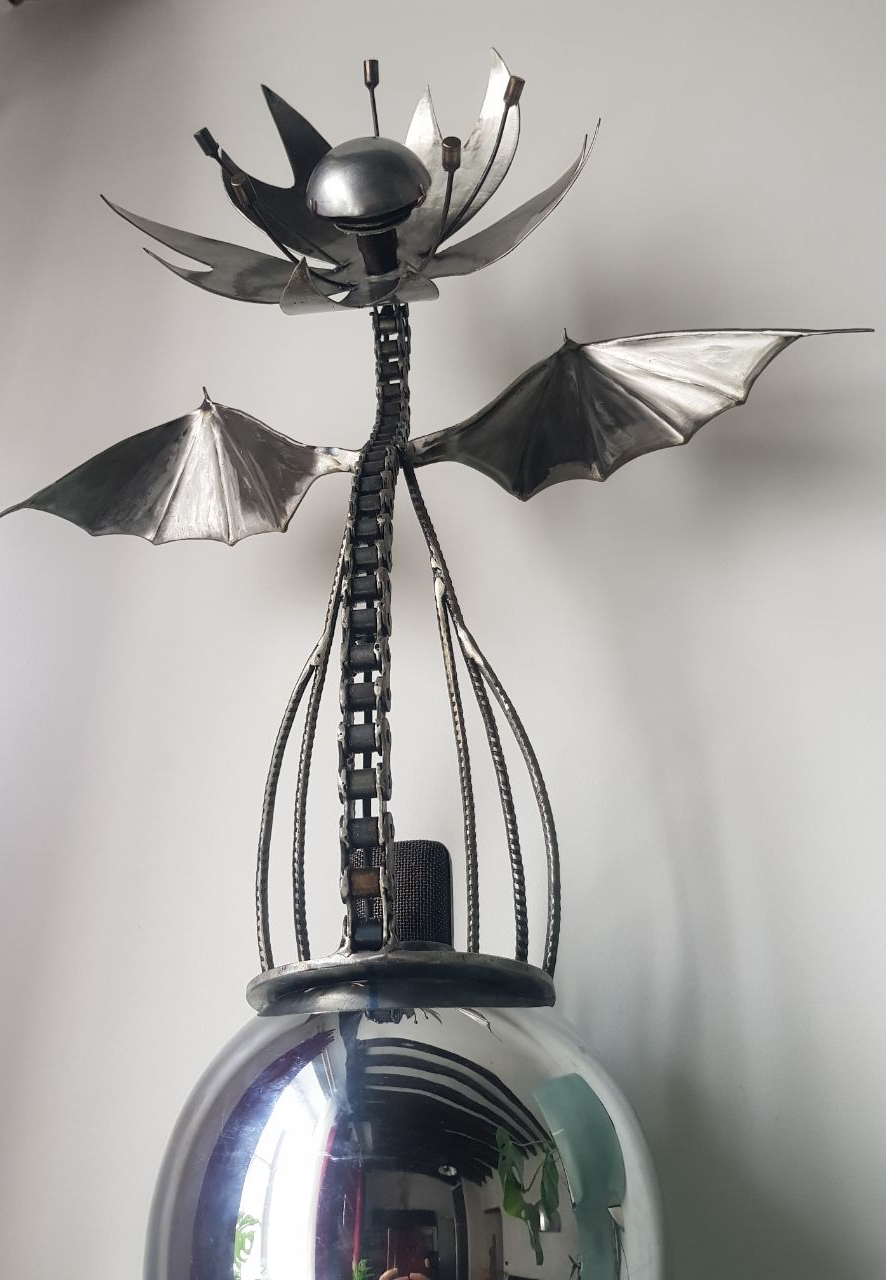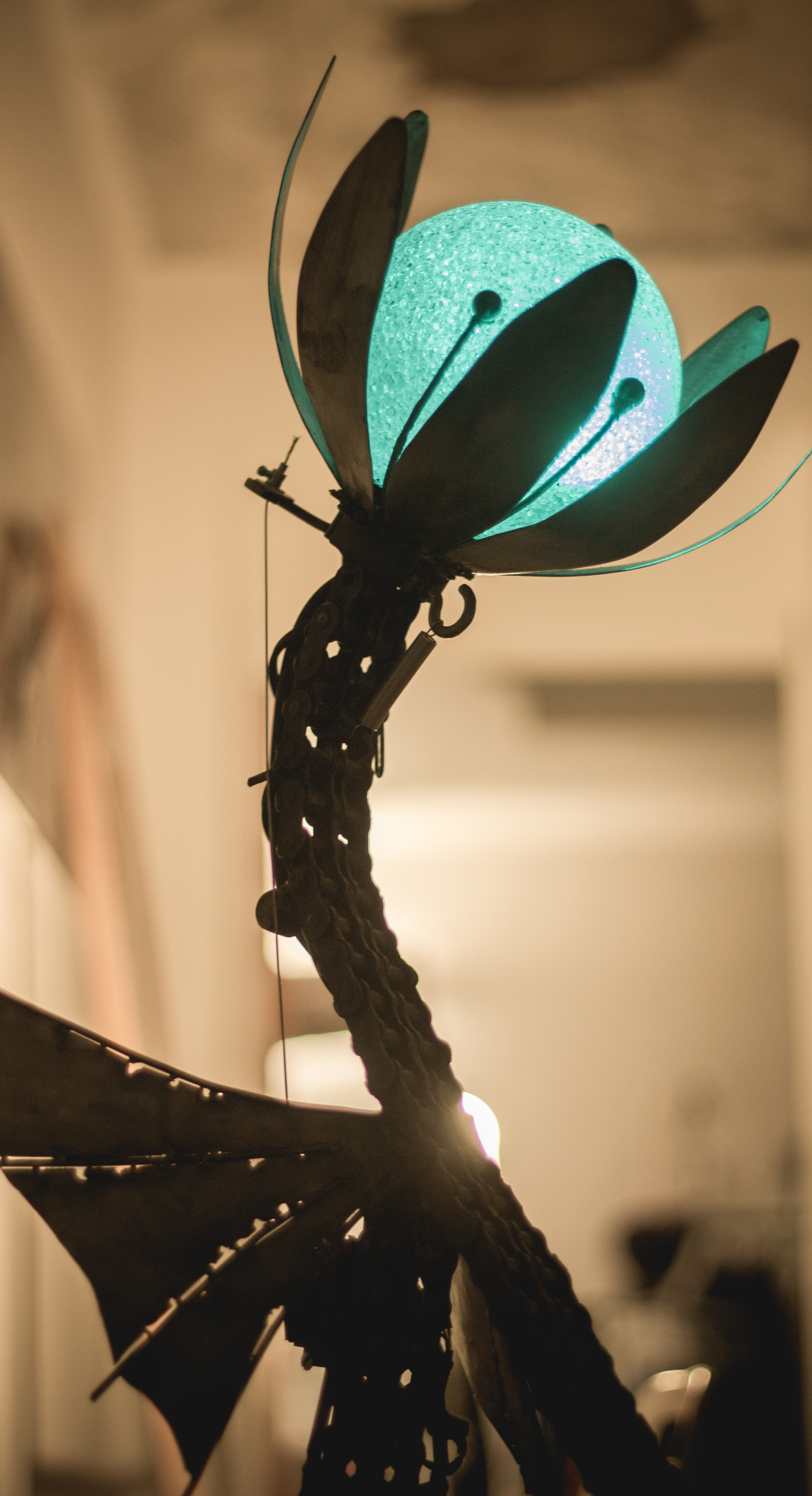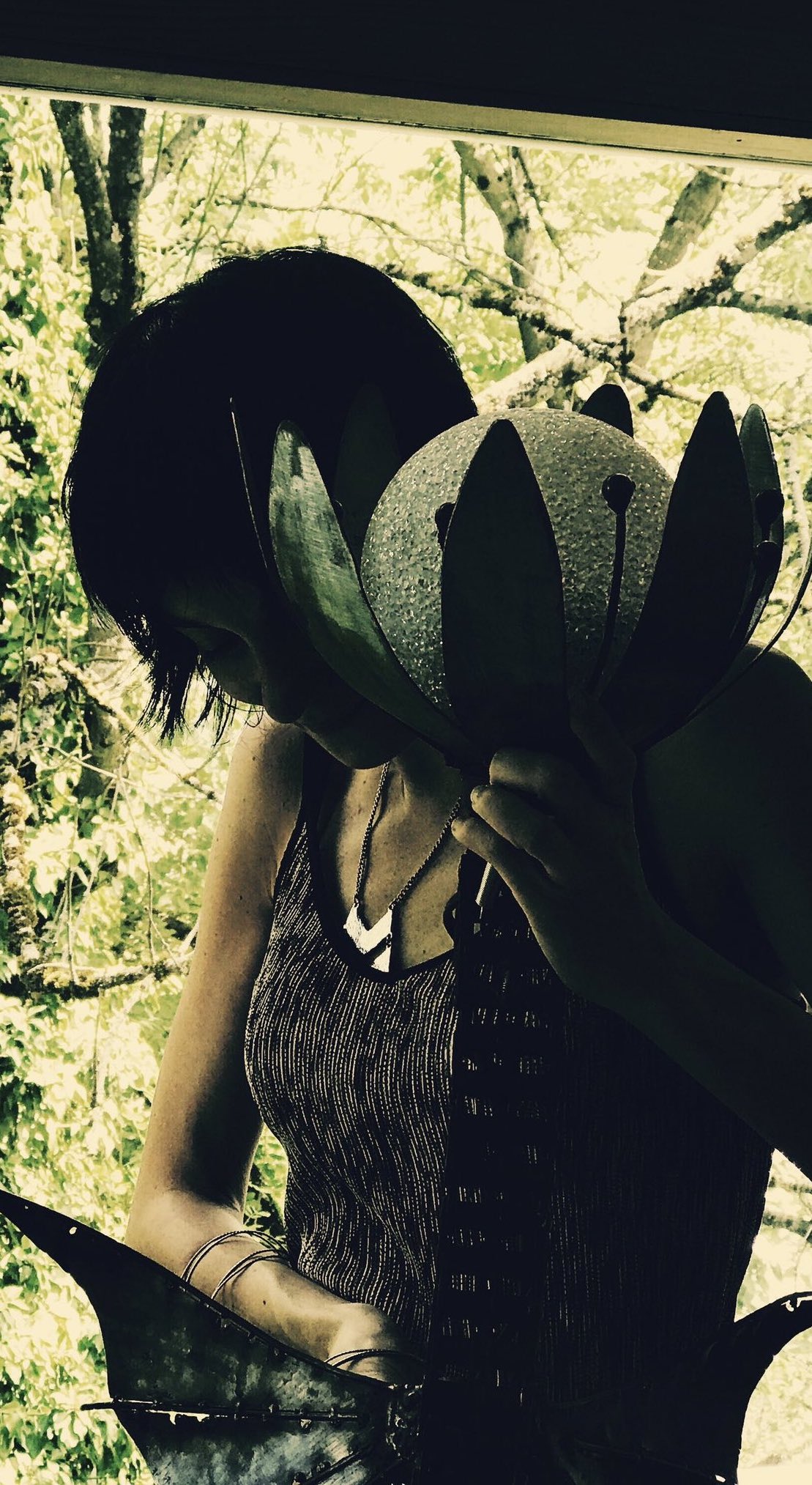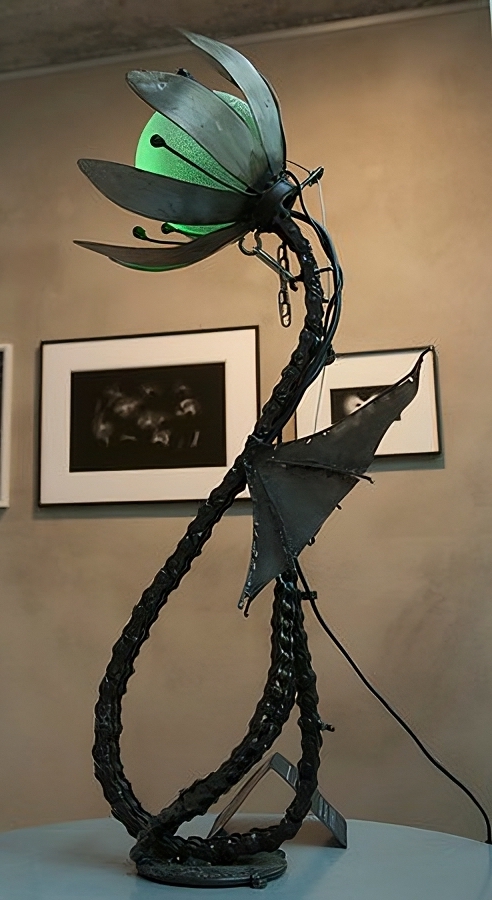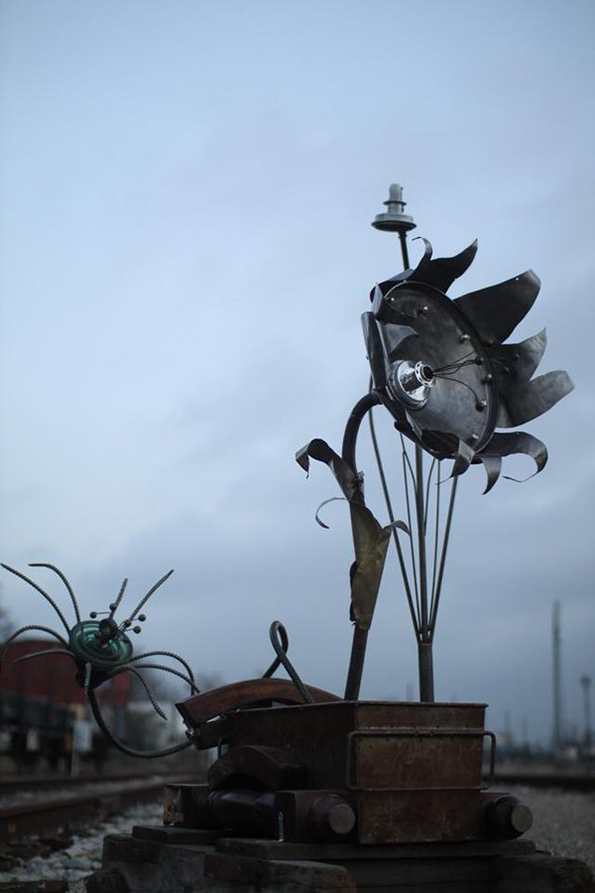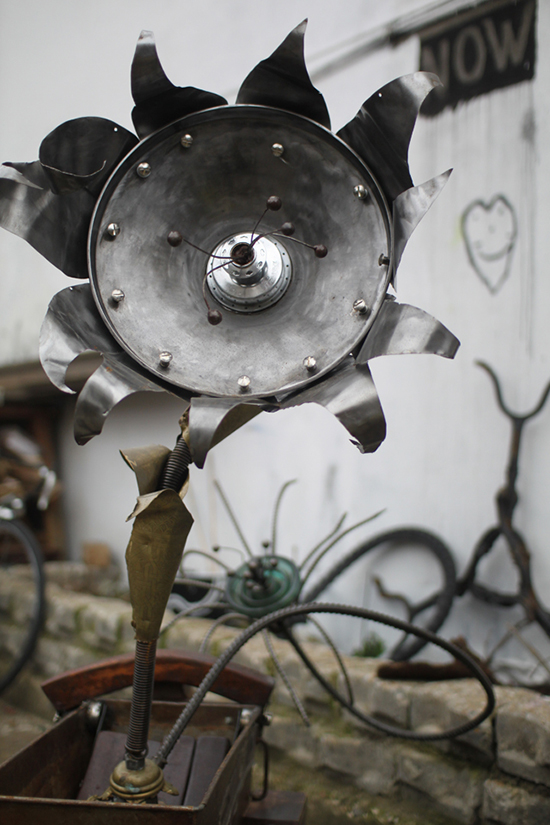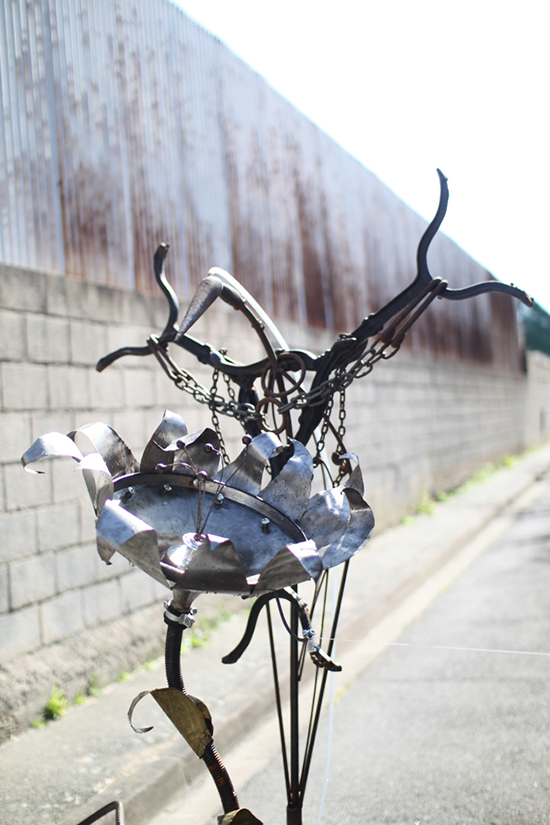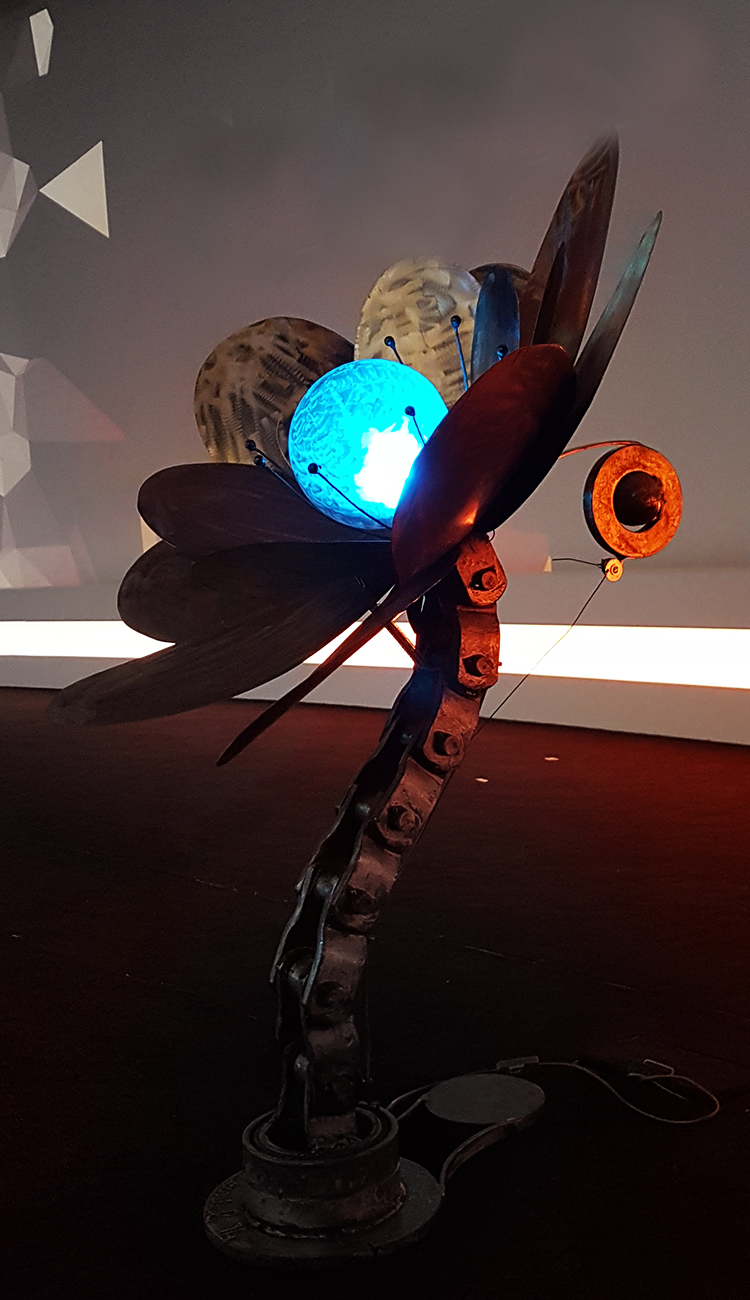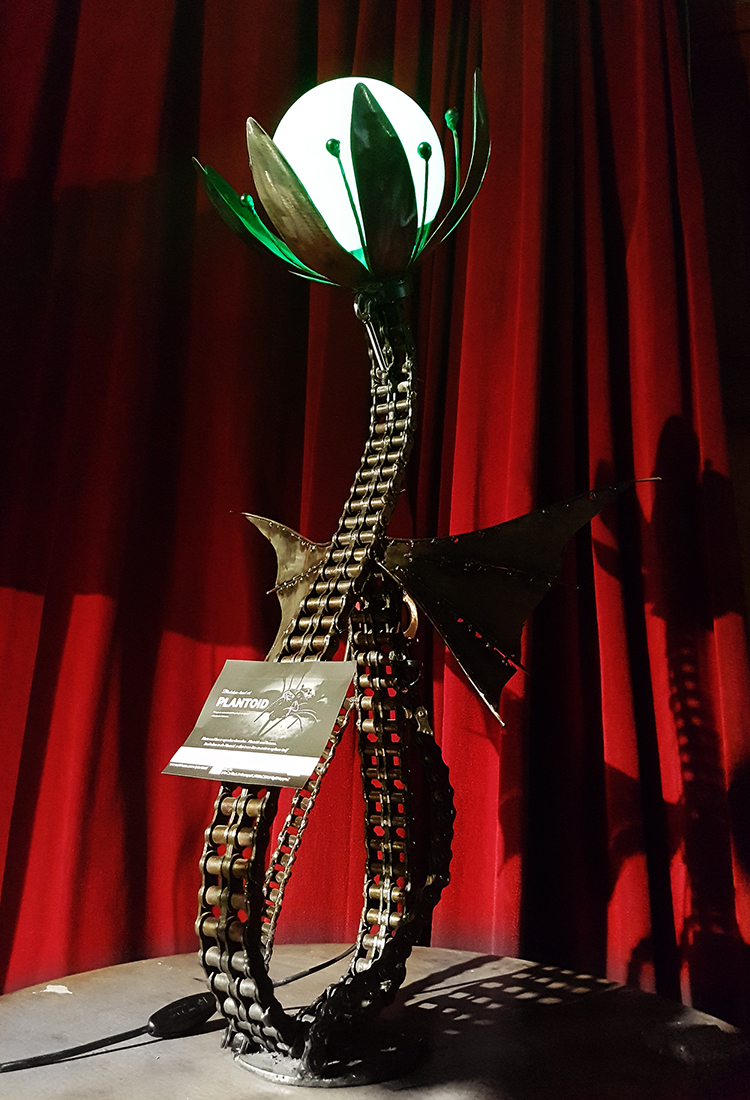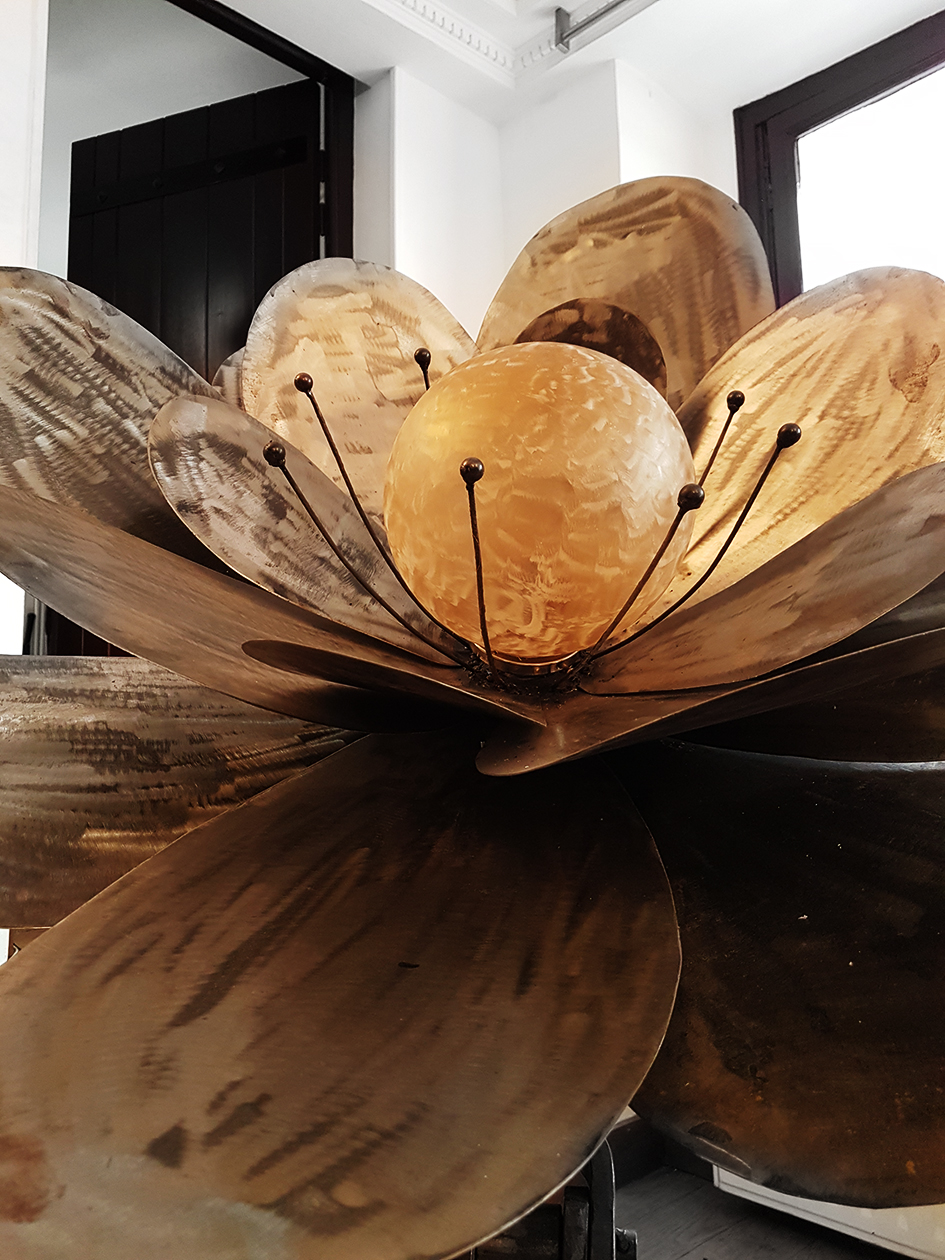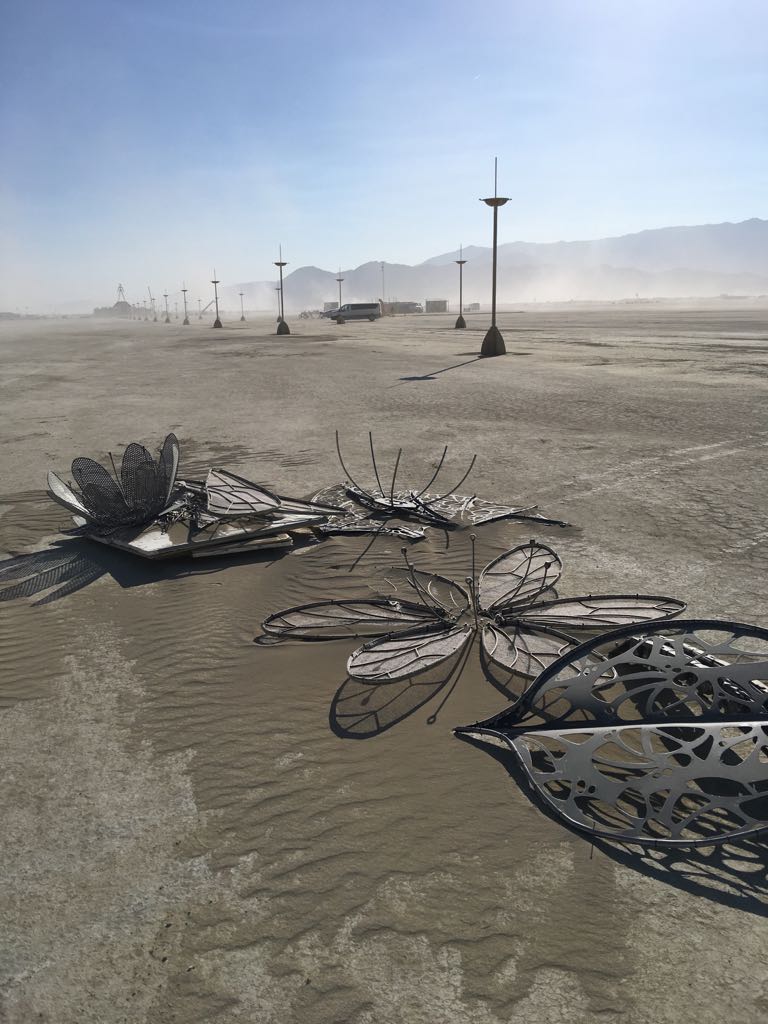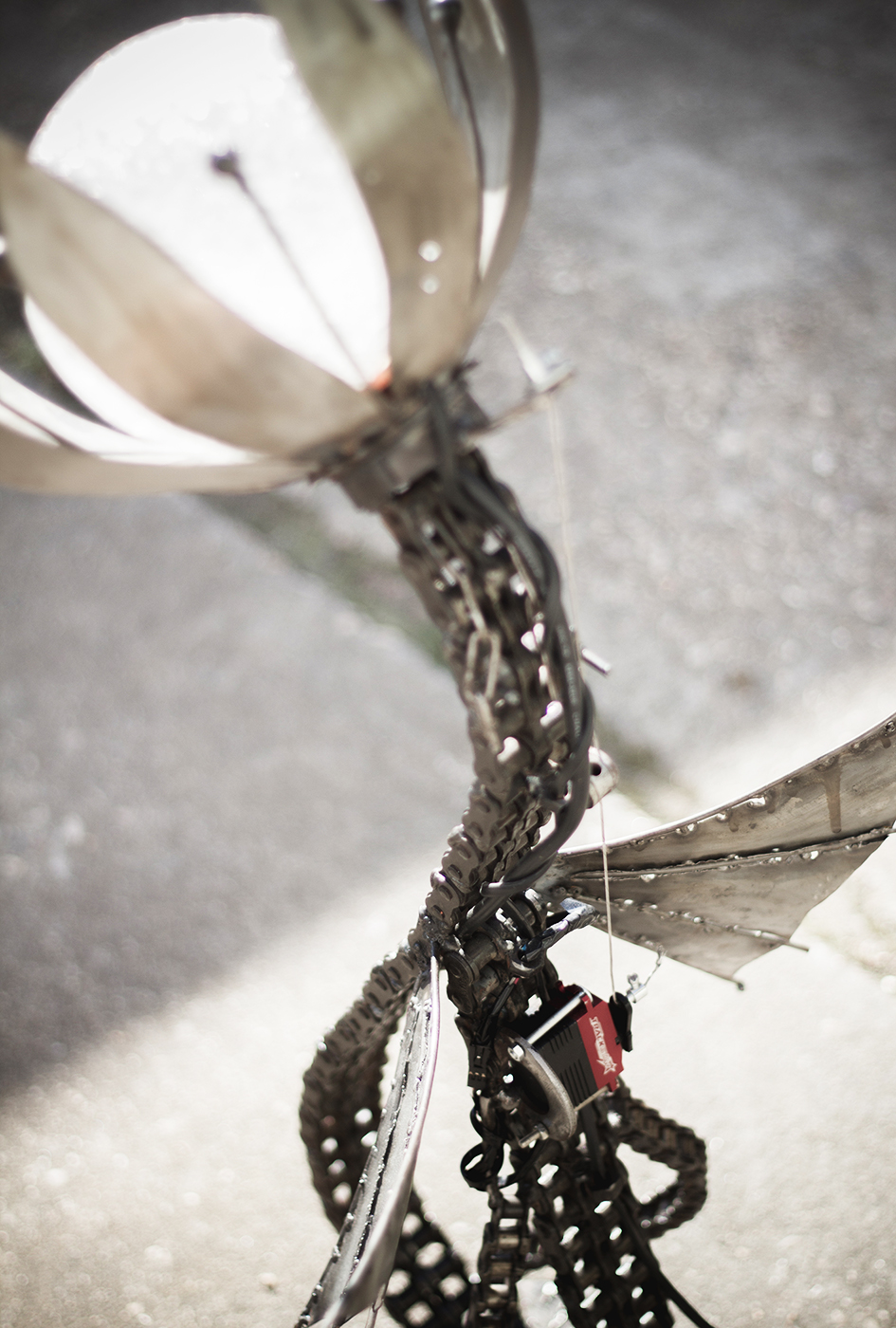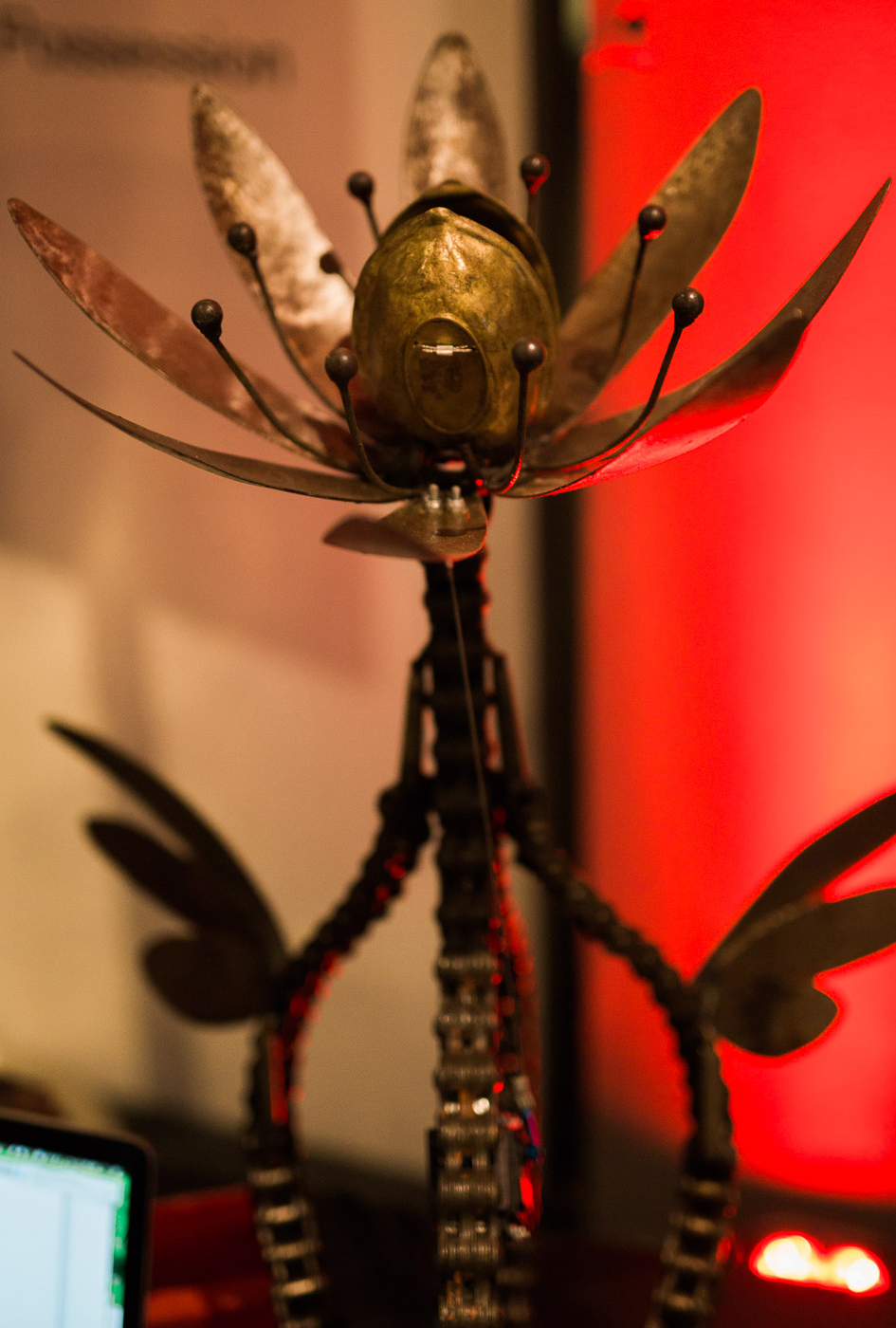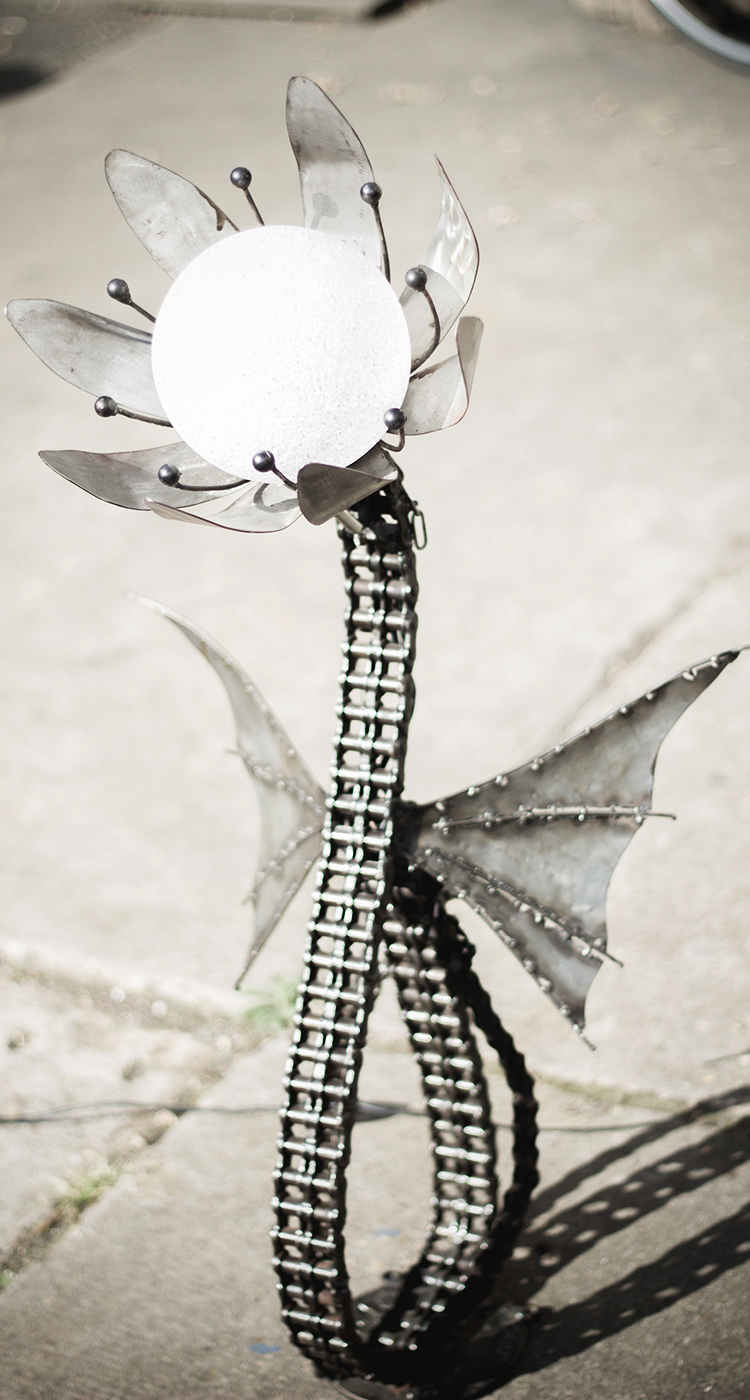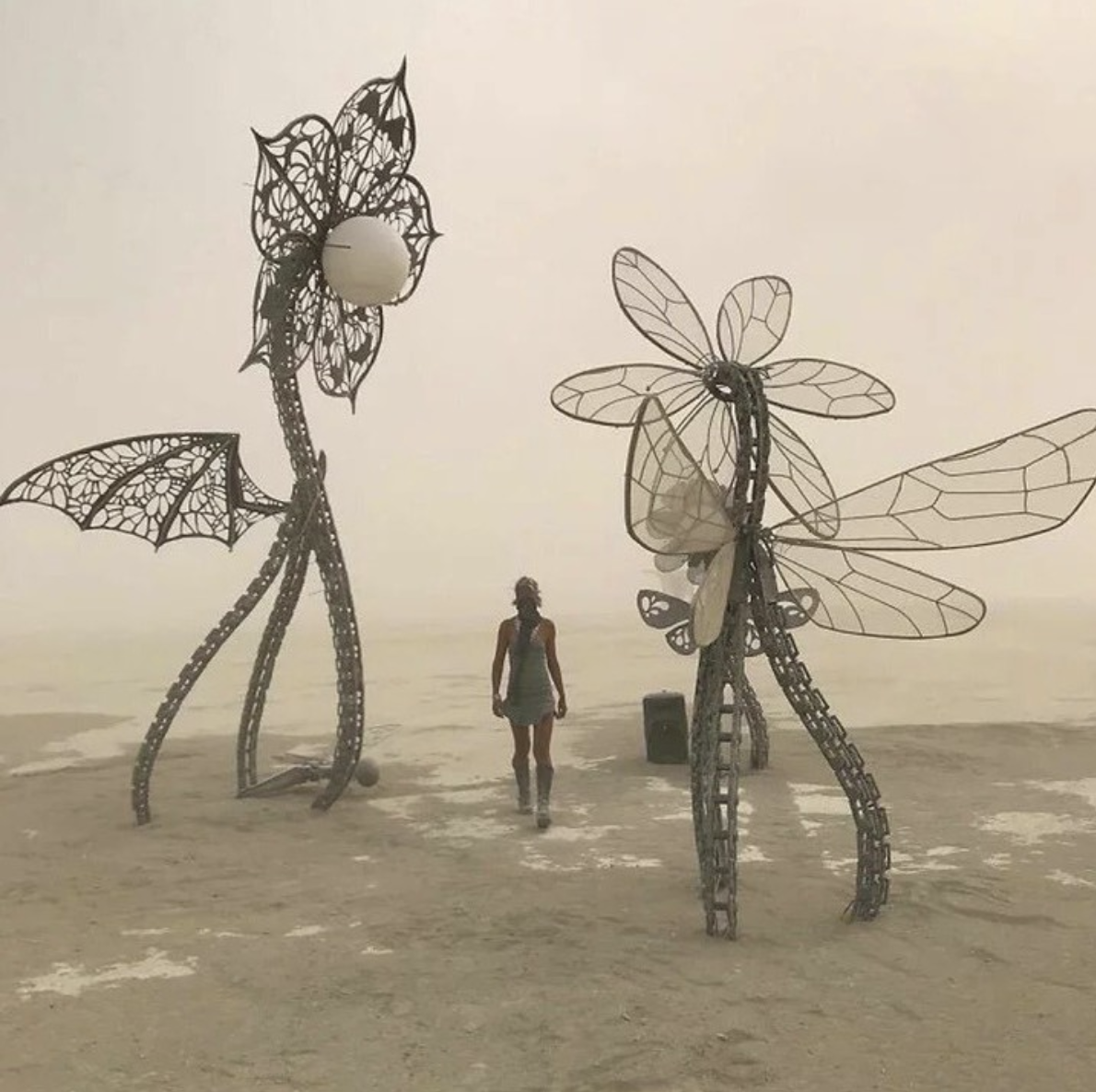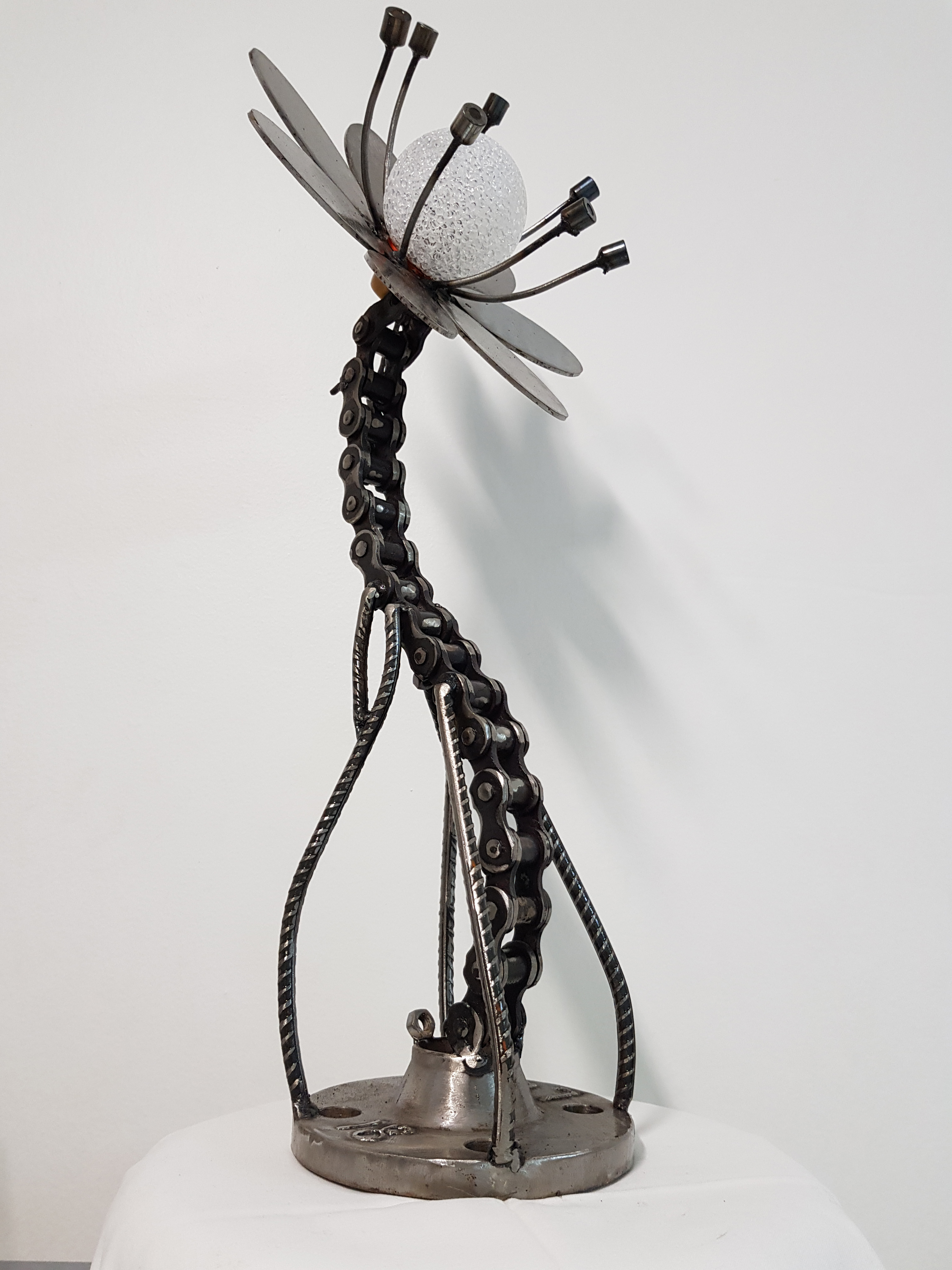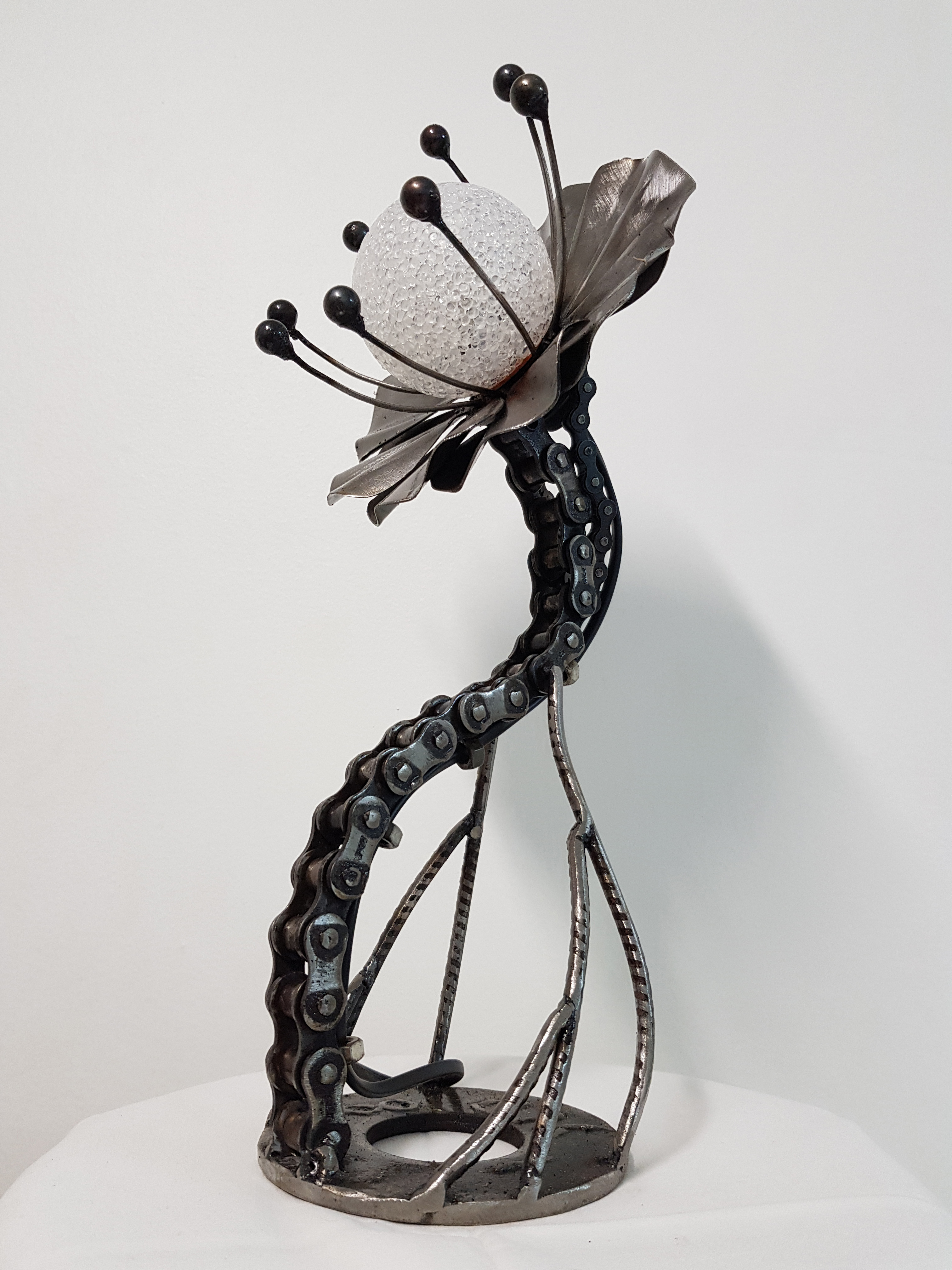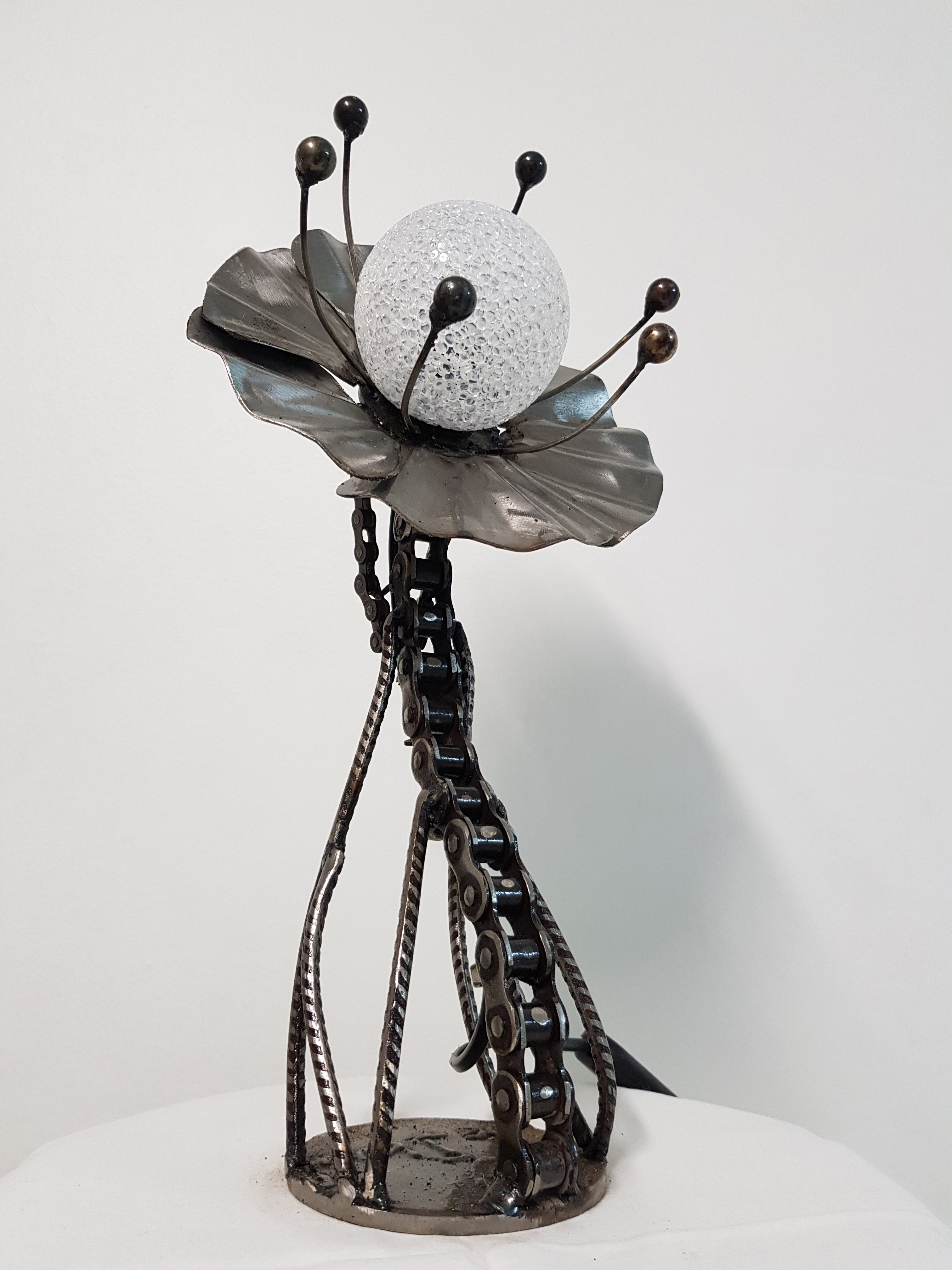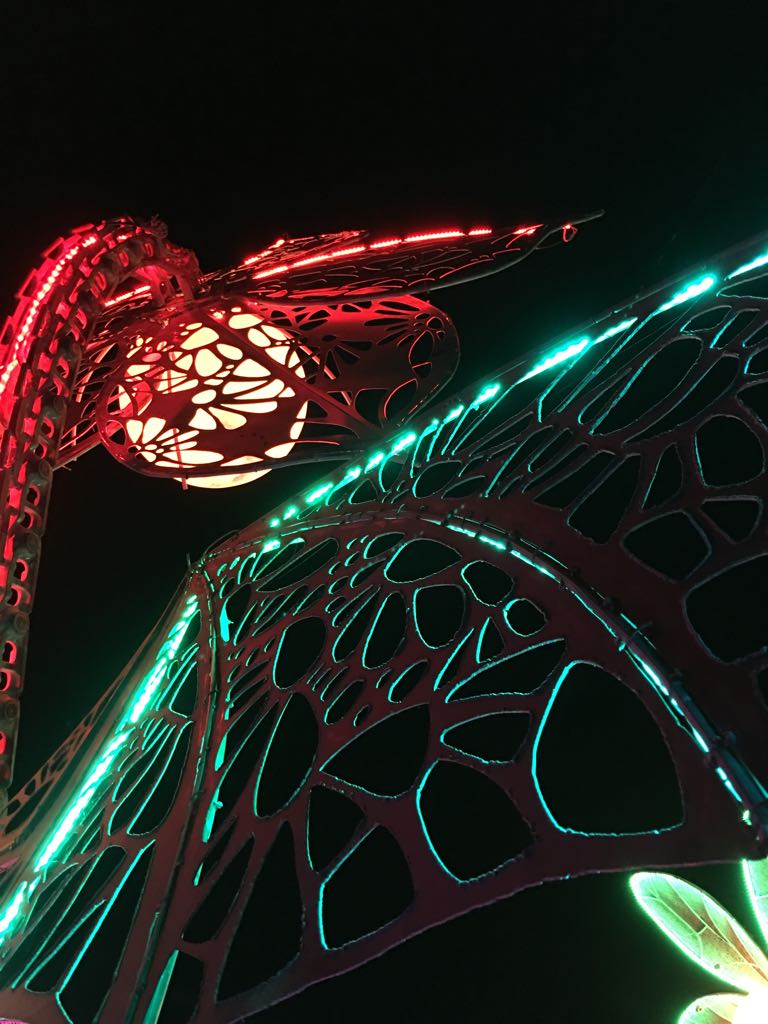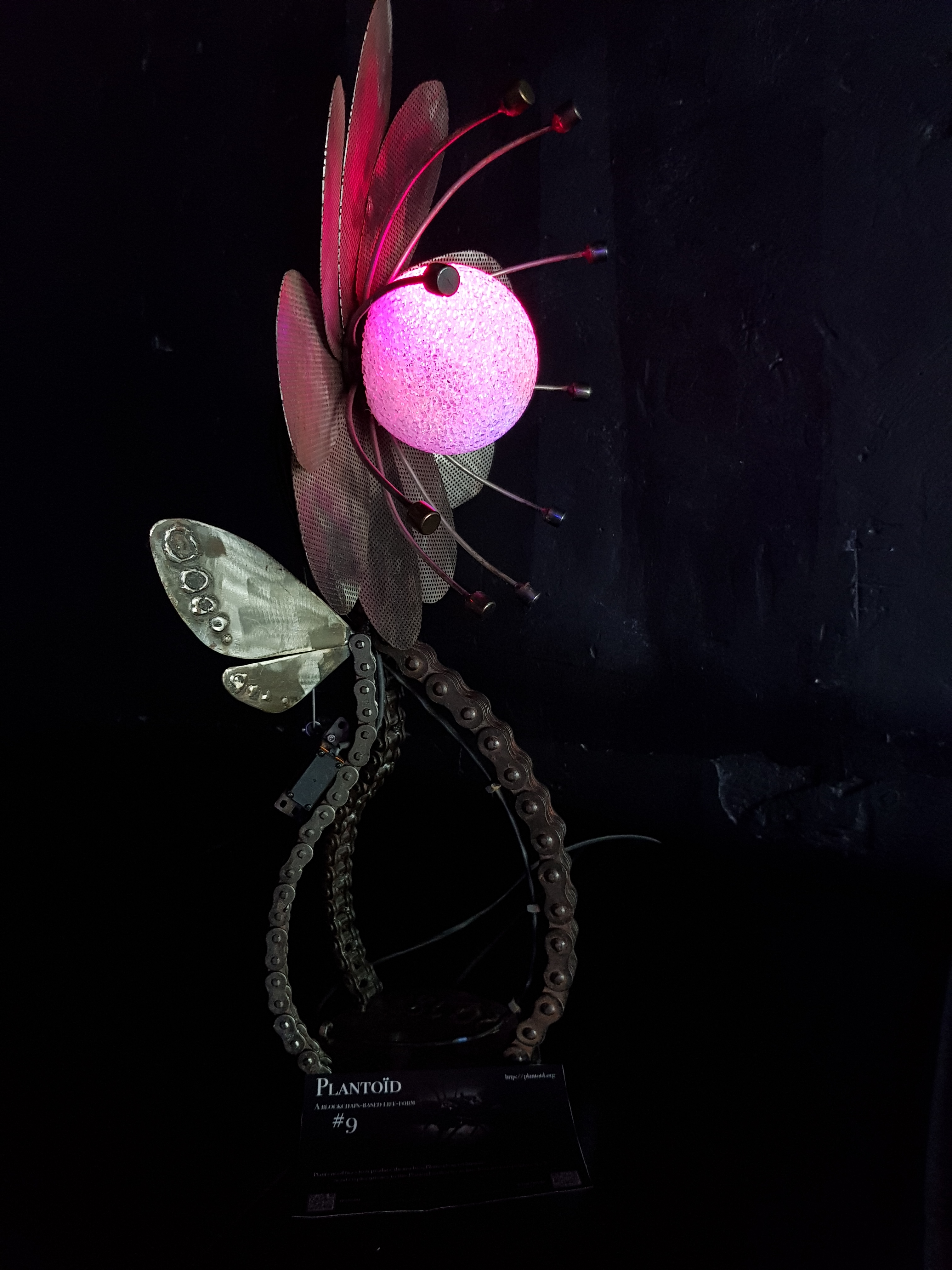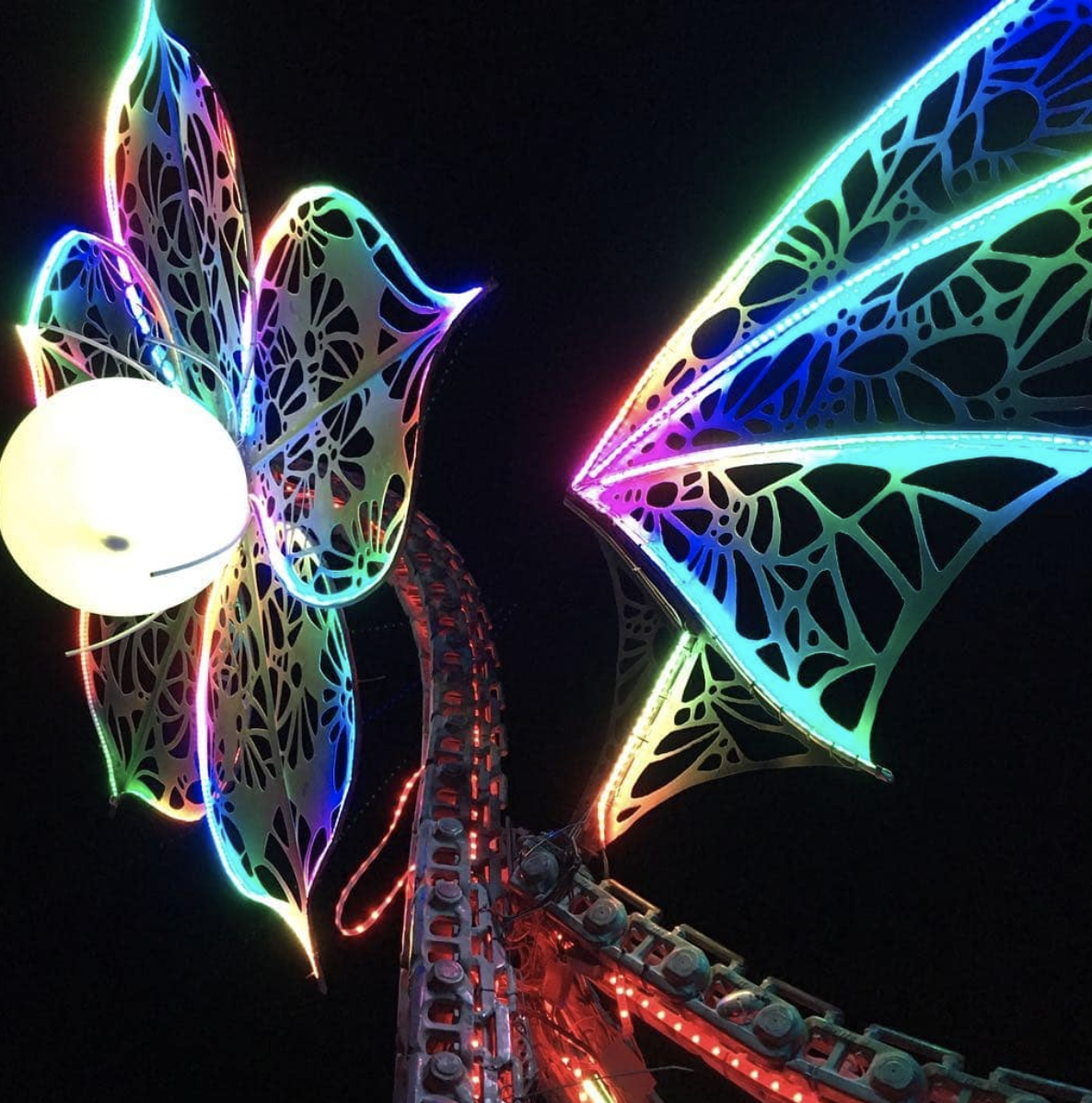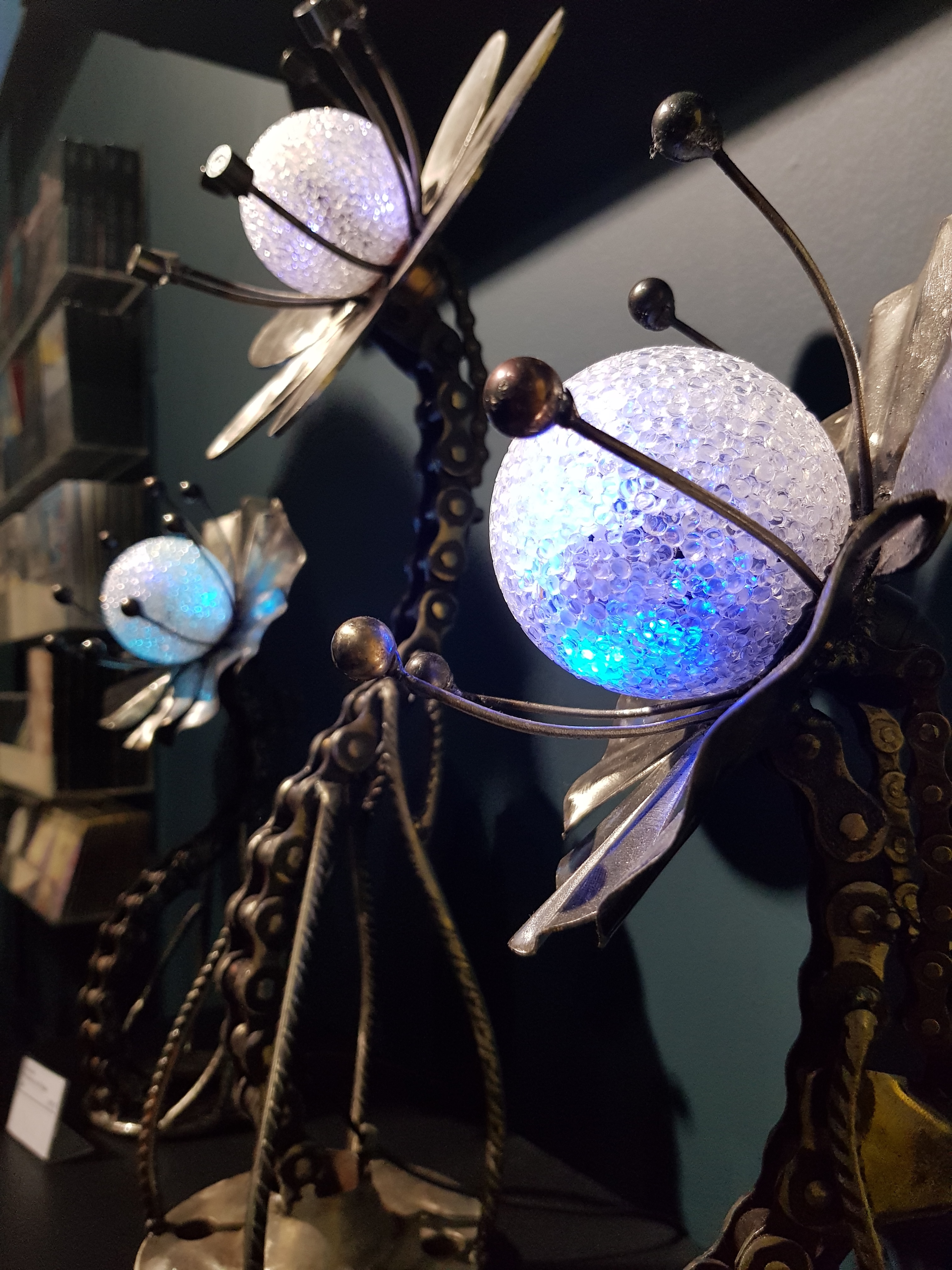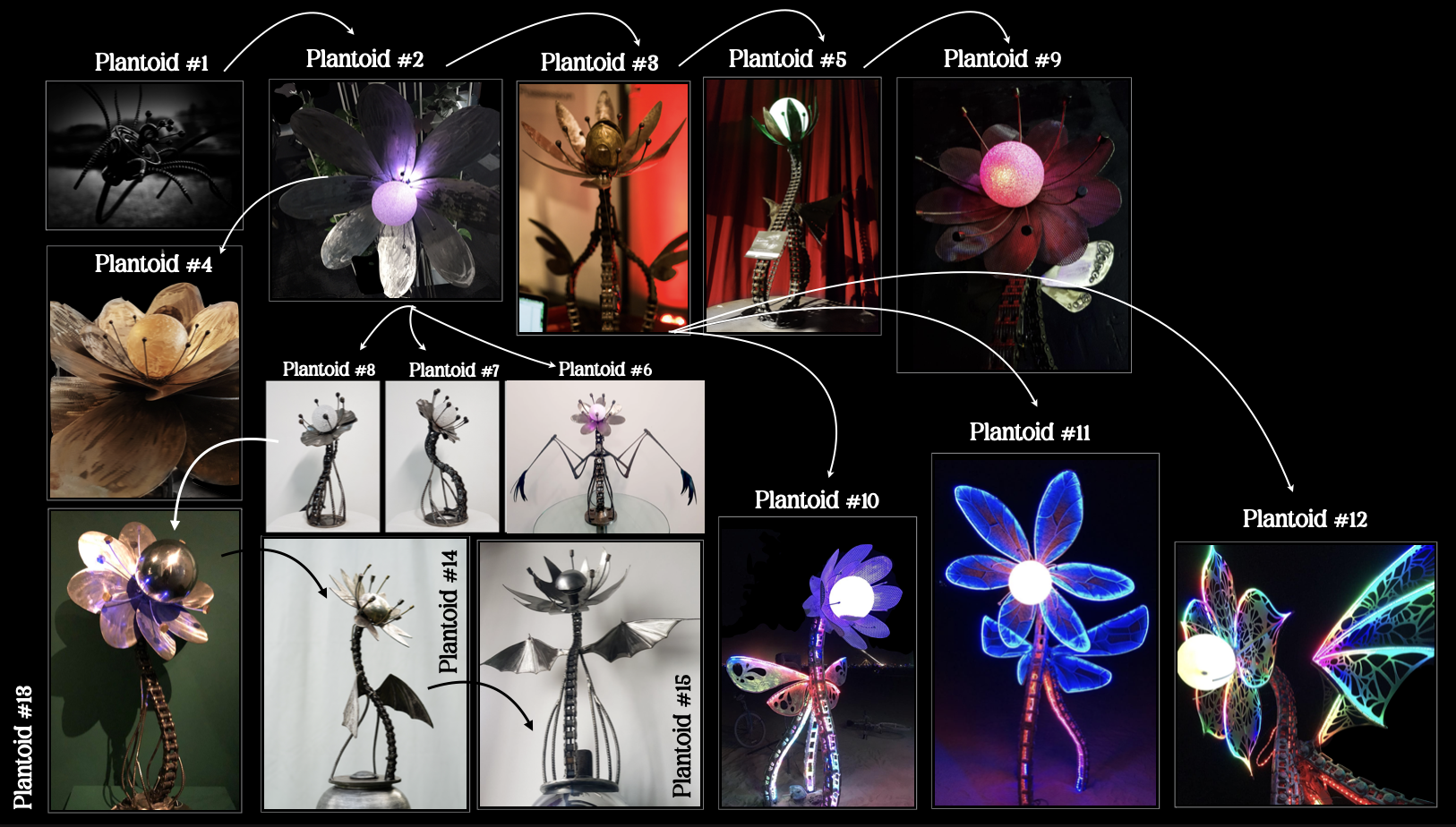(Online, 29 August 2023)
SOURCE is an alliance between Operator (Ania Catherine, Dejha Ti), 0xDEAFBEEF, and Casey REAS. An exhibition of artworks that all use software as a medium, our reason for naming it SOURCE was two-fold: as both a reference to “source code” and also the “source” of something that’s rapidly emerging and evolving.
Artists:
Anna Lucia and Gee's Bend Quilters, Holly Herndon + Mat Dryhurst, Mathcastles, Matt Kane, Mitchell F. Chan, Sarah Zucker, Steve Pikelny, Godmin, Iskra Velitchkova + Zach Lieberman, Maya Man, qubibi, Ross Goodwin, Travess Smalley, Emily Xie, Siebren Versteeg, Harm van den Dorpel, DADA, Jonas Lund, Lauren Lee McCarthy, Mario Klingemann, Melissa Wiederrecht, Sasha Stiles, Sarah Friend, Primavera De Filippi, Fingacode
Curators: Operator, 0xdeadbeef, Casey Reas
Check out the Plantoid online exhibition on Feral File here.
(Basel, 09 Sept - 12 Nov 2023)
The international group exhibition Exploring the Decentralized Web – Art on the Blockchain reviews the recent developments of blockchain and Web3 from an artistic perspective. It addresses an audience curious about art productions that creatively employ blockchain technology or ingeniously exploit the possibilities smart contracts offer. At the same time, the works assembled here invite viewers to reflect on the implications the political sphere and crypto market economies have on each other, as well as many other questions these technologies raise about how they shape our online interactions and impact our economies and societies.
Artists:
Botto | Primavera De Filippi | Simon Denny & Guile Twardowski & Cosmographia | Constant Dullaart | eeefff | Sarah Friend | Leander Herzog & Milian Mori | Kyle McDonald | Amanda E. Metzger | Chloé Michel | Rhea Myers | no1s1 Labs and Dezentrum | Operator | Lukas Truniger
Curators: Sabine Himmelsbach und Boris Magrini
Check out the video tour of the Hek exhibition here.
(Basel, 17 June 2023)
Art Basel Conversations brings together the most inspiring artists and cultural figures of today. It consits of exhibitions and live debates to learn from artists and thought leaders as they exchange on the key topics shaping the world of art and culture.
Blockchain has been hailed as a decentralizing and redistributive technology, empowering artists and increasing transparency in the art market. But how do artists engage with this new technology? What do you own when you acquire an NFT? How is a work authenticated and whom does the copyright belong to? Do transactions really remain forever on the blockchain?
Check out the Art Basel conversation with Plantoid here.
(Zurich, 11 June 2023)
NFT ART DAY ZRH is the prime annual conference at the intersection of Web3 and contemporary digital art, exploring the multifaceted interconnections between art and technology, through the lens of blockchain and NFTs, whilst building bridges with the traditional art world.
It brings together artists and thought leaders, from the field of digital art and the art market, who share their ideas, visions, and expertise.
(Rome, 5 April - 23 July 2023)
Ipotesi Metaverso - curated by Gabriele Simongini and Serena Tabacchi and promoted by the Fondazione Terzo Pilastro - is one of the first international exhibitions to raise questions about the technological/existential concept of the Metaverse.
Great artists of the past meet contemporary creators on the domain of imagination and bringing to life new spatial/existential dimensions in this exhibition that will bring together historical works by Carlo Maratti, Andrea Pozzo, Giovanni Battista Piranesi, Umberto Boccioni, Giacomo Balla, Fortunato Depero, De Pistoris, Giorgio de Chirico, Maurits Cornelis Escher, Victor Vasarely, Ugo Nespolo, Giulio Paolini, Giuseppe Fiducia, Pier Augusto Breccia, Alfredo Zelli, Cesar Santos, and site-specific works by some of the most innovative and sensational digital artists on the Italian and international contemporary scene: Robert Alice, Refik Anadol, Alex Braga, Joshua Chaplin, Sofia Crespo and Feileacan McCormick, Damjanski, Primavera De Filippi, fuse*, Fabio Giampietro with Paolo Di Giacomo, Krista Kim, Mario Klingemann, Pak, Joe Pease, Federico Solmi, Sasha Stiles, Pinar Yoldas.
More information available here (in italian).
(Linz, 10 June - 15 Sept 2021)
With PROOF OF ART, OÖ Landes-Kultur GmbH is bearing this challenge and is giving an overview
of the origins of NFTs and their development: from first formative attempts with digital technologies,
through first artistic experiments with the blockchain, to current crypto art. Both off- and online, the
multimedia exhibition presents around 25 positions by artists who deal with the new system of
meaning and values, examines the role of artists in their high-tech environment and discusses the
effects of virtual spaces on our everyday life.
The press release is available here.
The list of exhibited artists is available here.
(Venice, 3 November 2019)
Over the course of the 58th International Art Exhibition, in a bunker in an undisclosed location, a group of thinkers takes part in clandestine talks, part of the Thinking Head project by Lara Favaretto, and reflects on a number of words which the artist and her collaborators deem vital to discuss in the present moment.
CRYPTO is the title of the twelfth Clandestine Talk. For this occasion, Primavera De Filippi was invited, along with the Plantoid, to identify a group of people to discuss and reflect on the use of blockchain in the artistic context, and the use of art in the blockchain context. Other speakers: Stéphan-Eloïse Gras, Dominic Perini, Beatriz Helena Ramo
A recording of the talk is available here.
(Linz, 5 - 9 September 2019)
Can we continue to distinguish the future from the present? Should we? The rapidly accelerating impact of technology on our society, environment, and selves has, in recent years, left us questioning the boundaries between science and science-fiction, optimism and hindsight, the authentic and the fabricated, the familiar and the unimaginable. But what about the less perceptible boundaries, those strange delineations we draw unaware?
Over the past year, San Francisco Bay Area-based Stochastic Labs has convened a unique group of artists, engineers, scientists, thought leaders, and entrepreneurs to consider these questions through the production of artworks, prototypes, and social provocations. Drawing on the Bay Area’s longtime culture of innovation, deep sustainability focus, and multi-generational commitment to independent thinking, these works ask the viewer to be present and future at once –a useful strategy, perhaps, for anyone navigating temporalities mediated by technology.
The exhibition includes work by past and current Stochastic Labs residents
(San Francisco, 17 August 2019)
Creative technology incubator Stochastic Labs partners with the Long Now Foundation, the San Francisco Art Institute, and other thinkers and makers for “Reclaiming The Future: A Long Conversation” at Fort Mason Center For Arts & Culture. The group of thought leaders and artists convenes to consider questions about the future of technology, science, entrepreneurship, and the arts in a radical new conversation format that includes artistic demonstrations, an exhibit, inspiring speakers, and a bar-and-bites reception.
More information on the Reclaiming The Future exhibit here.
(Zurich, 29 May - 15 October 2019)
Kate Vass Gallery organised the Automat und Mensch exhibit: a History of AI and Generative Art, co-curated by co-curators Georg Bak and Jason Bailey. The exhibition is, above all, an opportunity to put important work by generative artists spanning the last 70 years into context by showing it in a single location. By juxtaposing important works like the 1956/’57 oscillograms by Herbert W. Franke (age 91) with the 2018 AI Generated Nude Portrait #1 by contemporary artist Robbie Barrat (age 19), we can see the full history and spectrum of generative art as has never been shown before.
See the exhibited Plantoid here.
(Paris, 19 February - 24 March 2019)
As part of the New Kids on the Blockchain exhibition, La Gaîté Lyrique displayed a selection of plantoids, blockchain-based lifeforms that look and act like a plant.
More information here.
(Black Rock City, 26 August - 3 September 2018)
Burning Man's 2018 will focus on the many forms of artificial intelligence that permeate our lives; from the humble algorithm and its subroutines that sift us, sort us and surveil us, to automated forms of labor that supplant us. Are we entering a Golden Age that frees us all from mindless labor? Everything, it seems, depends on HMI, the Human-Machine Interface. In a world increasingly controlled by smart machines, who will be master and who will be the slave?.
More pictures available on the Plantoid's Instagram of Burning Man.
(Paris, 18 May - 2 August 2018)
Attention Intelligences! est comme un voyage au cœur de nos pensées, dans ces régions du corps où se mélangent nos fonctions vitales, notre capacit à interagir avec le monde et avec les autres, nos imaginaires, nos amours.
Pour être à leur aise dans le monde, les humains développent des milliers de techniques de plus en plus sophistiquées. Certaines deviennent tellement complexes qu’on les appelle intelligences artificielles. Ce sont des outils d’une efficacité à l’allure magique. À tel point que certains humains croient voir leur reflet dans ces machines, qu’ils se mettent à craindre ou à adorer. Nous imaginons et concevons des techniques, et, en retour, ces techniques contribuent à fabriquer les liens entre nos neurones.
Ce qu’offre cette exposition, c’est la tentative d’aborder quelques phénomènes d’attention au travers des expériences esthétiques, à partir d’œuvres qui toutes jouent entre poésie et technologie. On pourra aussi, tenter de se regarder en train de regarder, nous emparer de la construction de notre pensée, intime et collective.
Download the Programme of the exhibition
(New York, 11-12 May 2018)
The Ethereal Arts program brings together an international group of contemporary artists working with public blockchains as a medium for conceptual and social experimentation. This exhibition features works including commissions from nine artists and art collectives taking up themes of trustless social organization, structural inequity, extrastate conflict, techno-piety, and digital commons, using the technology and language of distributed ledgers as material for critical investigation.
The body of selected works begins with a recognition that blockchains are an inherently social medium, thus to become a truly liberating technology, our foremost consideration must be the cultures we form around them.
>See the Plantoid submission
(Paris, 5 April - 9 July 2018)
This exhibition is an opportunity to experience works of art produced with the help of increasingly sophisticated robots. Featuring works by some forty artists, it offers a gateway to an immersive and interactive digital world - an augmented body sensory experience that subverts our notions of space and time.
In an ever more robotic society, these artists explore new technologies, including Artificial Intelligence, which is potentially revolutionising human lives and even the conditions in which artworks are produced, presented, disseminated, conserved and received.
These works contain a warning. Although Artificial Intelligence can help us, it also threatens to make itself our master by reducing humans to simple slaves to performance.
Artists have extensive experience of this dangerous game: from the first prehistoric cave paintings, they have used technology to achieve a goal and then subjected it to their questions and imaginations.
Ever more sophisticated software has given rise to increasingly autonomous works, an ability to generate infinite forms, and interactivity with audiences who permanently modify this game.
(London, 20 May - 25 June 2017)
Beware: A mysterious and controversial technology is among us. This technology is the blockchain, the technology that underpins digital currencies and makes possible dramatic new conceptions of global governance and economy, that could permanently enrich or demote the role of humans - depending on who you talk to.
A self-owning forest with ideas of expansion, a self-replicating android flower, a tale of lost innocence, a DIY money making rig, a Hippocratic Oath for software developers, a five minute marriage contract; this exhibition presented by Furtherfield shows us life with blockchain technologies - through artworks by Jaya Klara Brekke, Pete Gomes, Rob Myers, Primavera De Filippi of O’Khaos, Terra0, Lina Theodorou and xfx (aka Ami Clarke).
Imagine a world in which responsibility for many aspects of life (reproduction, decision-making, organisation, nurture, stewardship) are mechanised and automated. Transferred, once and for all, from natural and social systems into a secure, networked, digital ledger of transactions and computer-executed contracts.
The artworks in this exhibition envision future world-making by machines, markets and natural processes, free from interference by states and other human institutions.
Replayed at:
- (Ljubljana, 11 Jan - 9 Feb 2018)
- (Rijeka, 15 Feb - 9 March 2018)
